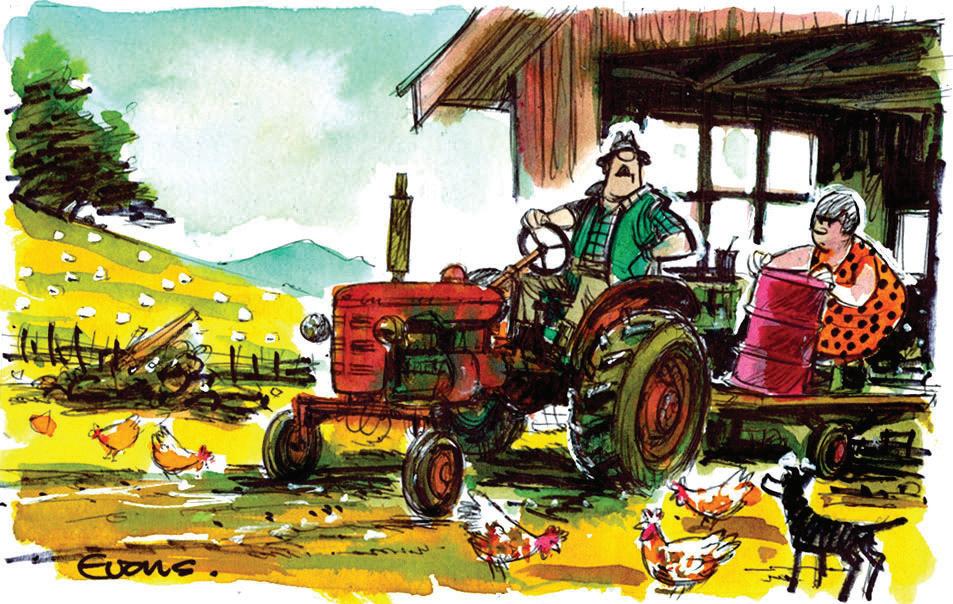
CREAM OF THE CROP
Massey’s top ag students
Page 7
METHANEPOWERED TRACTOR
Gaining traction
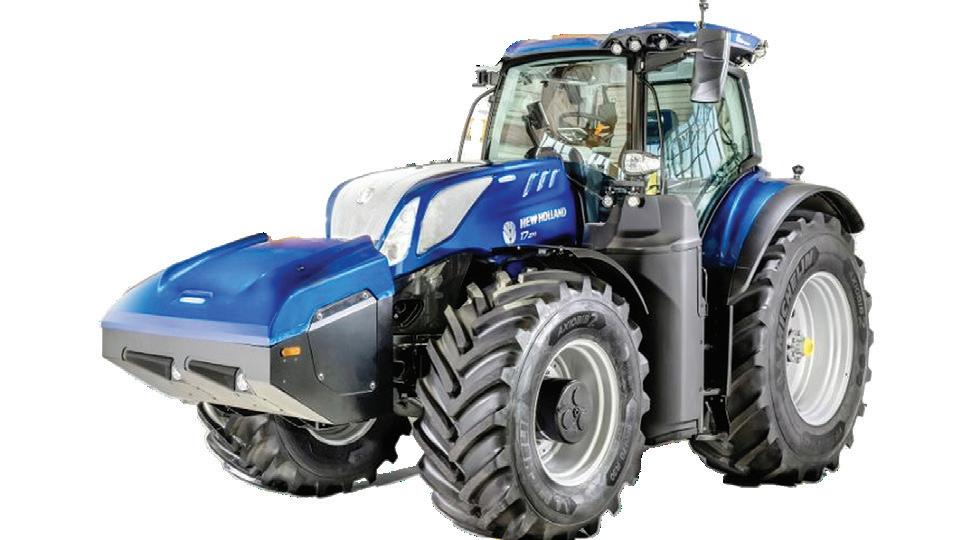
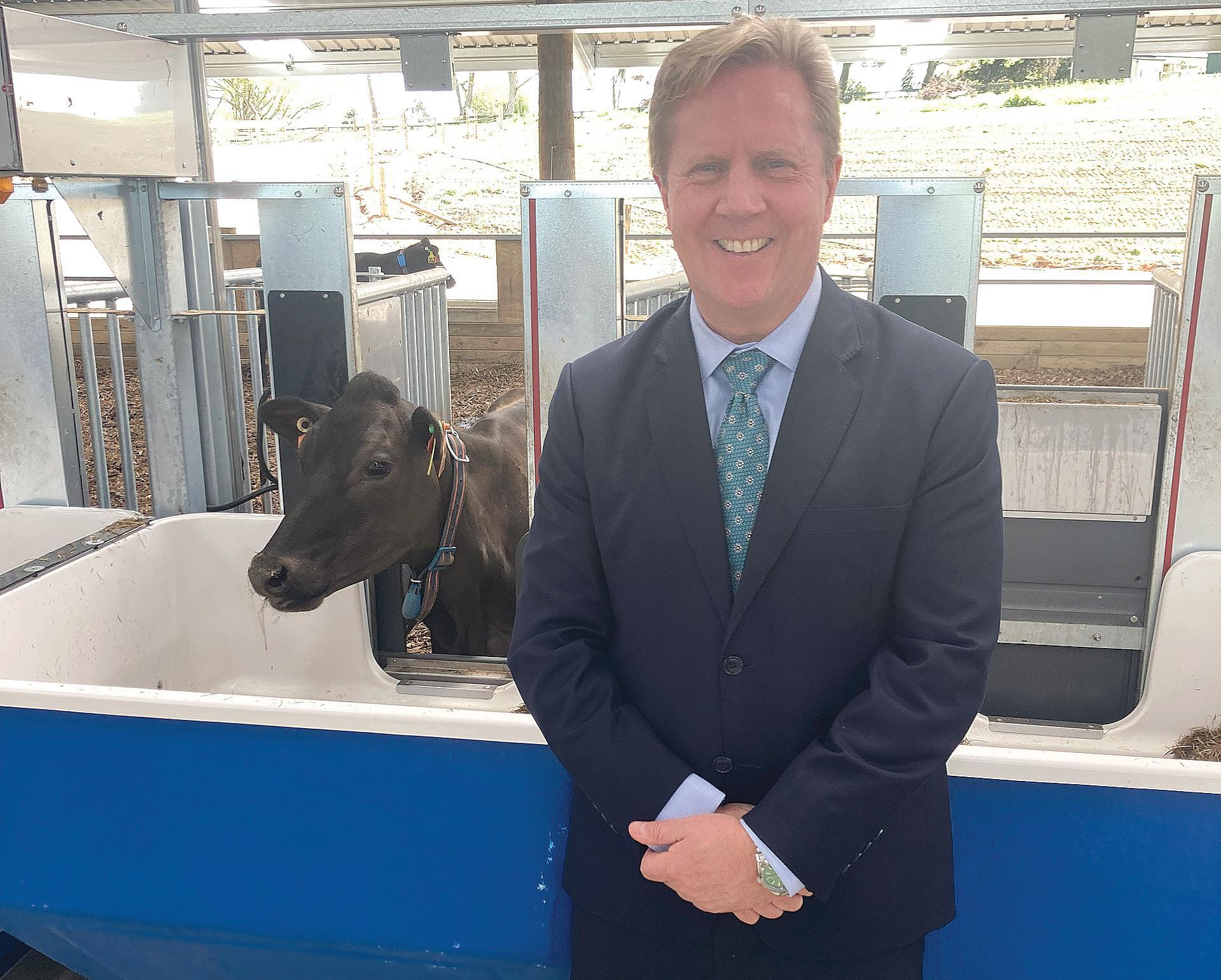


CREAM OF THE CROP
Massey’s top ag students
Page 7
METHANEPOWERED TRACTOR
Gaining traction


Agriculture


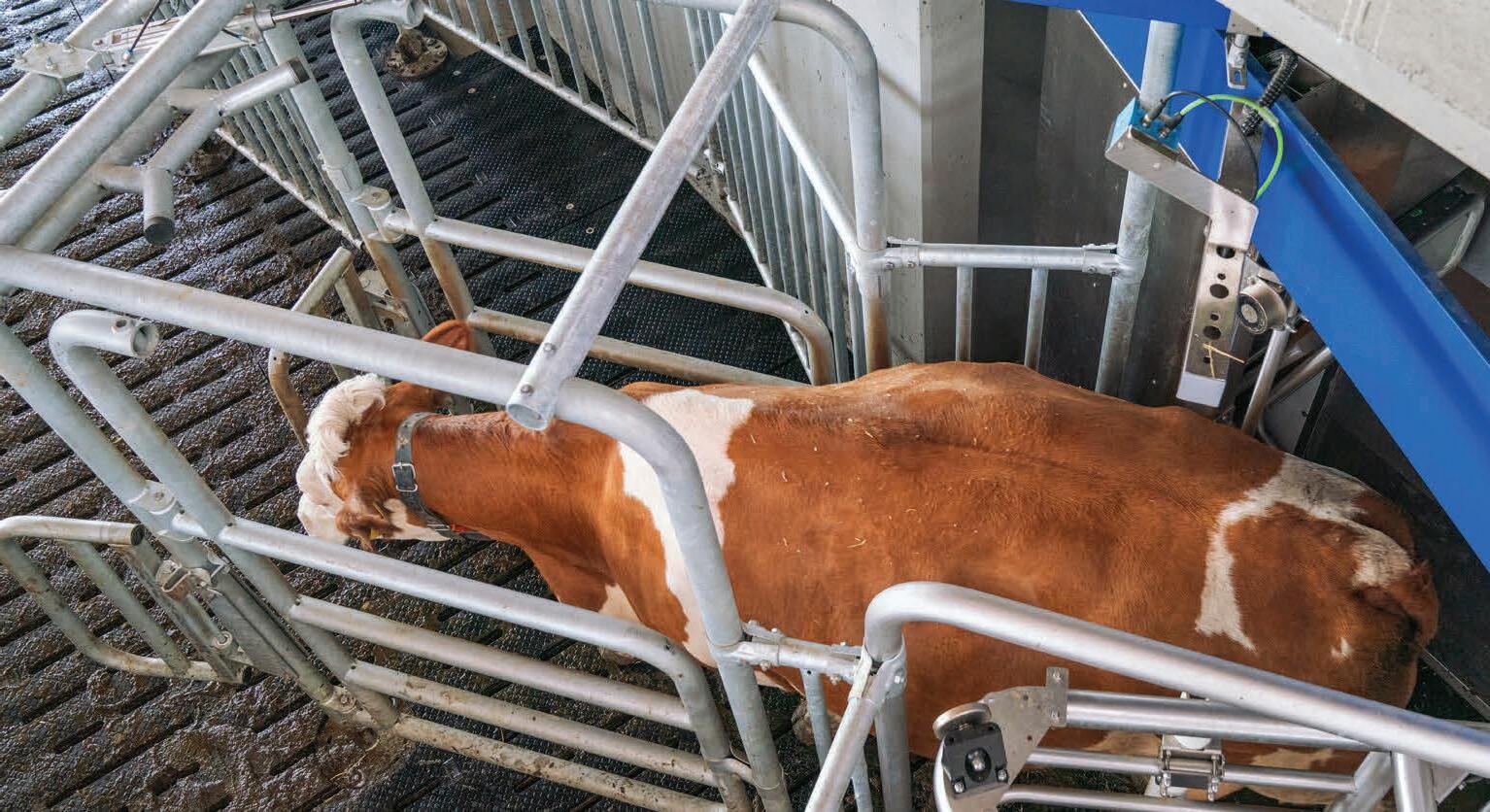
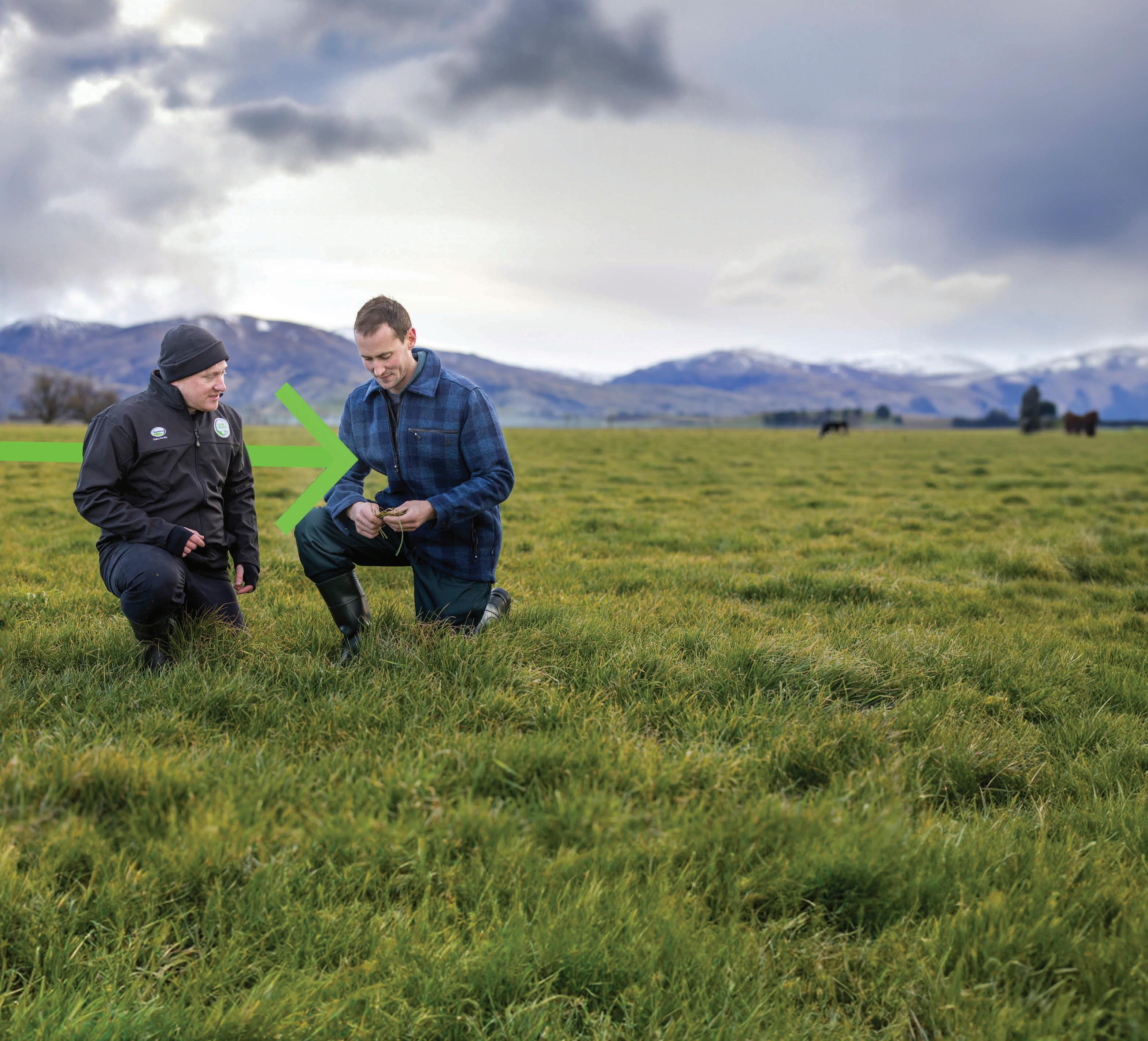
At Farm Source, we’re here to support you in getting the most out of your pasture and crops. Your local team will work alongside you to understand the unique factors on your farm and offer personalised advice based on your goals.

Pre-sow visit: Evaluate your farms feed requirements, support paddock selection for regrassing or under sowing, and offer seed and treatment advice.
Post emergence visit: Optimise and track the progress for your farm and provide recommendations to fit your specific needs and conditions of your farm.
It’s just another way we’re supporting your bottom line this spring.
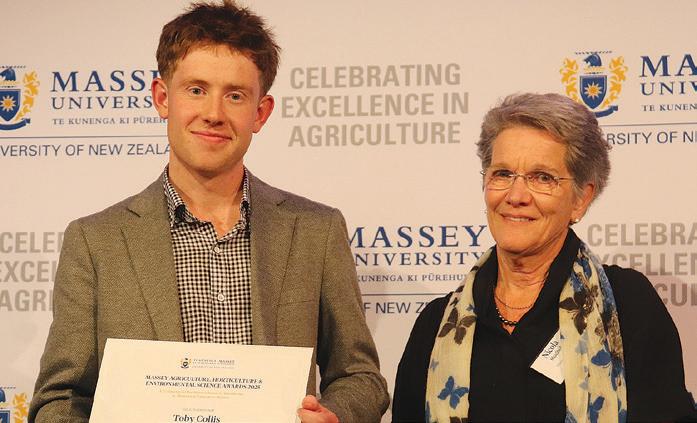
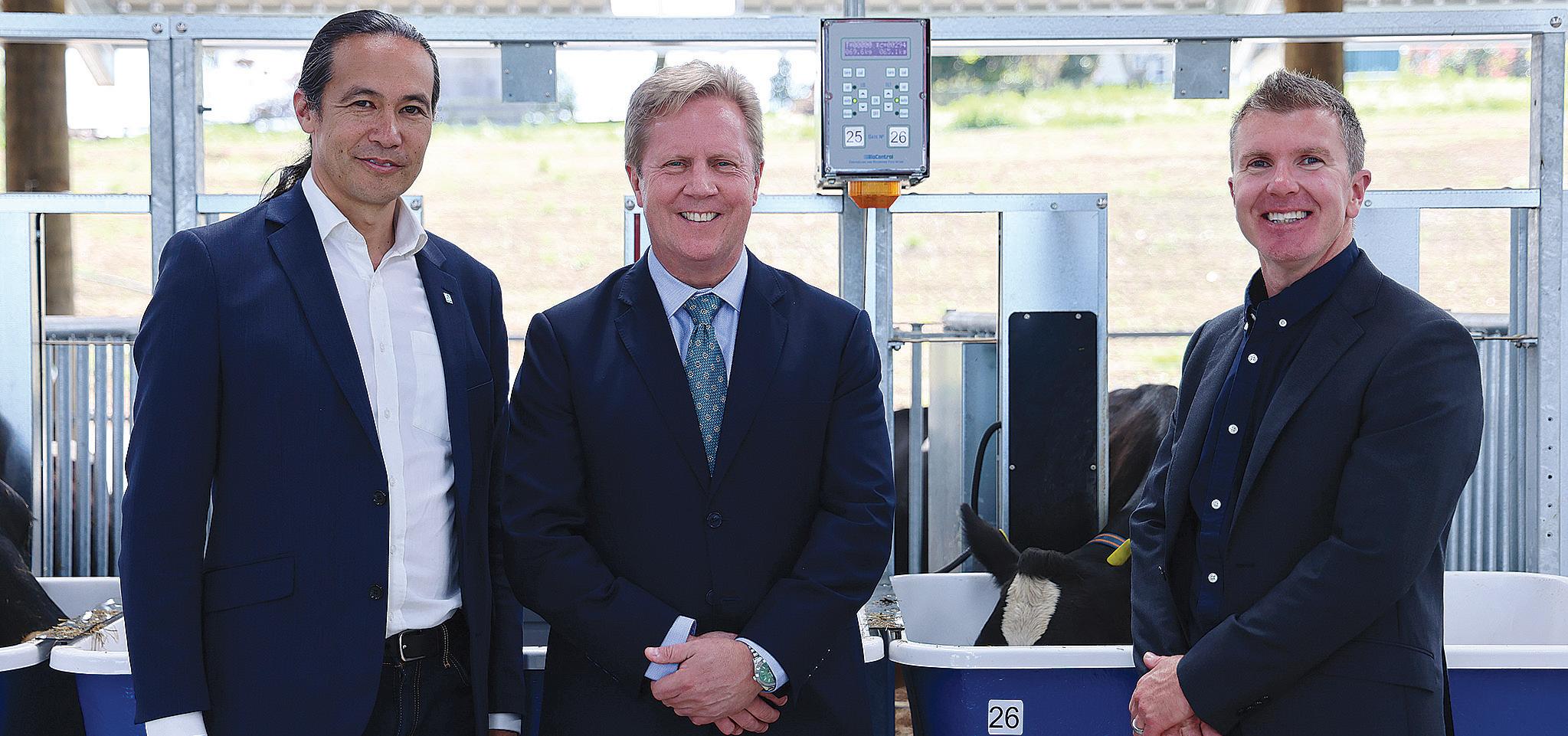
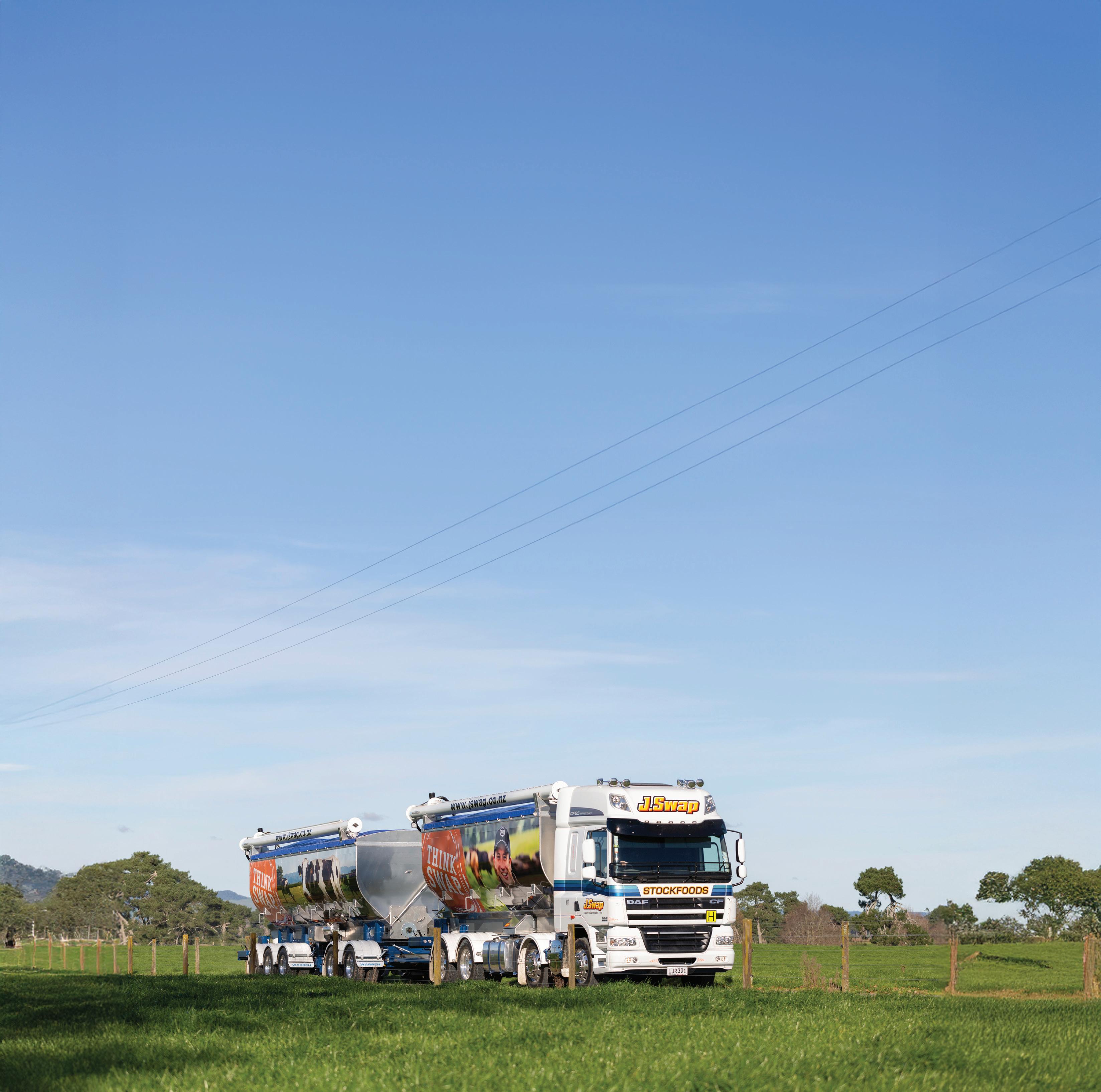

SUDESH KISSUN sudeshk@ruralnews.co.nz
A
LARGE slice of the $3.2 billion proposed capital return for Fonterra farmer shareholders could end up with the banks.
Debt reduction is the overwhelming preference of most Fonterra farmers, if a survey of a small group is anything to go by.
The survey, carried out by agribusiness consultants BakerAg, received responses from 28 Fonterra shareholders.
Debt reduction was the first choice of 75% of respondents, with 10% preferring on-farm investment and another 10% succession. The responses were published
in BakerAg’s monthly publication, MilkLines.
BakerAg dairy team director Chris Lewis says while the sample is small, the survey provides insight into both the financial priorities of some farmers and the cultural mindset underpinning their investment and succession decisions.
“While the sample size is modest, the responses offer a valuable snapshot of attitudes, priorities, and strategies.”
Lewis says the overwhelming preference for debt reduction highlights the risk-averse and financially disciplined stance of most farmers.
“Reducing debt provides immediate security, lowers interest obligations, and
improves long-term resilience. Notably, none selected land purchase, retirement or personal spending as their priority. Underscoring that farmers view this capital as core business-first rather than growth or lifestyle-oriented.”
Fonterra farmers will vote at a special general meeting this week on a board proposal to sell its global consumer and associated businesses for $4.22 billion to French company Lactalis. If the divestment is approved, Fonterra is signalling a capital return of $2/share, which is equivalent to $3.2 billion.
In the survey, respondents were asked to break down percentages of allocation. Debt repayment
dominates with 75% of respondents saying this was first choice and on average they would put 72% of the Fonterra Brands sale distribution into debt reduction.
According to Lewis, applying that 72% to the $3.2b of distribution is $2.3b could be going back to banks.
“Several respondents did go on to say that debt reduction was the first step in a process that would ultimately enable future land purchase or succession.”
He noted that nearly 26% have land purchase as their second option.
“If 1 in 4 Fonterra shareholders are looking to buy another farm, that must equal strong demand and an inevitable push in real estate prices.

“Investments, both on- and off-farm, absorb much of the remainder. Several respondents noted that their debt was already low and that they were exploring alternatives that included purchasing urban houses.”
Lewis says that the
survey paints a clear picture of farmers’ priorities and what might happen following the Fonterra Brands sale.
“The proceeds are largely treated as an opportunity to strengthen balance sheets rather than immediately fuel expansion or
consumption. Farmers remain conservative, debt-focused, and reliant on trusted advisors. These decisions will likely position the sector for future stability and measured growth,” Lewis says.

NIGEL MALTHUS
LINCOLN UNIVERSITY Dairy Farm will be tweaking some management practices after an animal welfare complaint laid in mid-August, despite the Ministry for Primary Industries (MPI) investigation into the complaint finding no cause for action.
SAFE (Save Animals from Exploitation) claimed that it had seen animals standing in mud, calves piled on top of each other in a trailer, and
a cow being chased aggressively by a worker on a quad bike.
However, a visit by an MPI inspector the day the complaint was received, August 15, found no significant concerns.
Lincoln University Professor of Farm Management Alison Bailey read a statement on the incident at the LUDF spring Focus Day this month, saying the university had worked closely with MPI and also commenced its own investigation.
“Following the visit of MPI they
have confirmed both verbally and in writing that there were no significant concerns and that no action is required,” she said.
The complaint related to animals on the farm’s secondary East Block across Ellesmere Junction Road from the milking platform.
“For my own investigation, we agreed and noted the following:
“First, to improve the movement of recently calved cows, all cows that were yet to calf were moved onto the milking platform. This required us to
provide extra feed, which we did.
“For the 26-27 season we will make sure that all our cows are on this platform here, nearer to the feed and handling facilities.
“We will continue to ensure compliance with Dairy NZ guidance and animal welfare requirements in relation to calves in trailers, and we continue to review our policies and procedures and associated staff training, basically, to make sure that we minimise stress to our animals and handle them with care.”
Bailey said that as a specialist landbased University with a portfolio of farms, Lincoln was dedicated to establishing, maintaining and monitoring the highest standards of animal welfare.
“We prioritise the well-being of every animal in our care. And we’re committed to upholding the standards of the New Zealand Animal Welfare act 1999.
“And we have to be, as a demonstration farm, at the forefront of animal welfare.”

SUDESH KISSUN sudeshk@ruralnews.co.nz
LIC CHIEF executive David Chin says meeting the revised methane reduction targets will rely on practical science, smart technology, and genuine collaboration across the sector.
He says that the Government is investing over $400 million to speed up the rollout of methane cutting tools and LIC is deeply committed to that same goal as the country’s farmerowned herd improvement cooperative.
Speaking at the opening of the new methane research on LIC’s innovation farm in Waikato, Chin says the facility stands as a clear demonstration of LIC’s long-term commitment and long-term investment to help Kiwi farmers lead the way in highly efficient low-emissions dairying.
Chin says the new facility is another example of LIC investing today to ensure farmers have the tools they need for the future.
“New Zealand farmers are already global leaders in emissions efficiency but face increasing pressure to produce more with less.
“Our role is to help them meet this challenge head-on,” says Chin.
“By breeding cows that are both highly efficient and loweremitting, we can offer farmers a practical on-farm solution that doesn’t compromise productivity. Our investment in this research is focused on achieving exactly that.”
He adds that there is strong collaboration between LIC and its partners.
“Together we’re proving that what can be achieved when government, industry and science align behind a shared purpose –
to help New Zealand farmers remain the most sustainable producers of milk in the world.”
Chin thanked LIC’s partners, researchers and farm staff who have been involved in this project so far.
He says the results have been incredibly encouraging.
“We know that our elite bulls can produce between 18 and 28 grams of methane/kgDM eaten and we also know that that trait is heritable, it’s passed from sire to daughter.
“The next phase of this research and what this barn is involved in is observing these cows as they milk.
“These cows will confirm whether that low methane advantage carries through into production.
“If it does, we’ll have the science and the data to breed dairy animals that are both highly productive and naturally lower emitting.”

BNZ SAYS it is backing aspiring dairy farmers through an innovative new initiative that helps make the first step to farm ownership or sharemilking a little easier.
BNZ’s First Farm proposition helps lower barriers to entry for first-farm buyers or those buying their first dairy herd by reducing deposit requirements. It also pairs every approved customer with an experienced farmer mentor for their first two seasons. This is to help ensure their first steps into farm ownership or sharemilking are a success.
BNZ general manager agribusiness and corporate banking Dave Handley says farmers are the backbone of our rural communities and contribute significantly to the economy.
“For many young farmers, getting their first foothold on the farming ladder is very challenging. First Farm is about bridging that gap by making ownership more achievable,” says Handley.
TWO RURAL data organisations - DairyNZ’s DairyBase and Farm Focus - have formed a new partnership that aims to remove data duplication and help provide more timely, useful benchmarking insights for farmers.
Dairy farmers can now connect their Farm Focus account directly with DairyBase, which simplifies data sharing, reduces admin time, and ensures their information contributes to industry-leading benchmarking.
“We know that data duplication can be frustrating for farmers, so this partnership is about making life easier and enables smarter and more timely decisions to be made,” says DairyNZ head of economics, Mark Storey.
“Farmers have also told us they want benchmarking to reflect what’s happening now - not what was happening 12 months ago. This is the first step in that journey, as we work on greater partnerships with other key sector organisations.”
LIC CHIEF scientist Richard Spelman says genetics is one of the many mitigators that could be put forward to meet the revised methane reduction targets.
He estimates that potentially genetics can deliver 5% of methane reduction of the 2050 target.
“So, that’s about a third to a fifth of the range the Government’s put out recently and that comes from permanent cumulative gain that we’ll get from genetics.
“So, this barn will see a lot of science over the next four to five years and that science
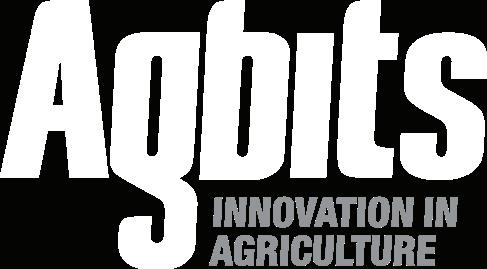
will really underpin the low methane genetics that we want to be delivering to our dairy farmers.”
Early research shows that bulls with low methane emissions can sire daughters that produce less methane per kilogram of feed consumed. This finding was validated last year after the highest- and lowest-methane emitting sires were selected to produce a herd of daughters at Pamu’s Wairakei Estate farm in the Central Plateau.
Spelman says this confirms that genetic variation plays a role in methane emissions,

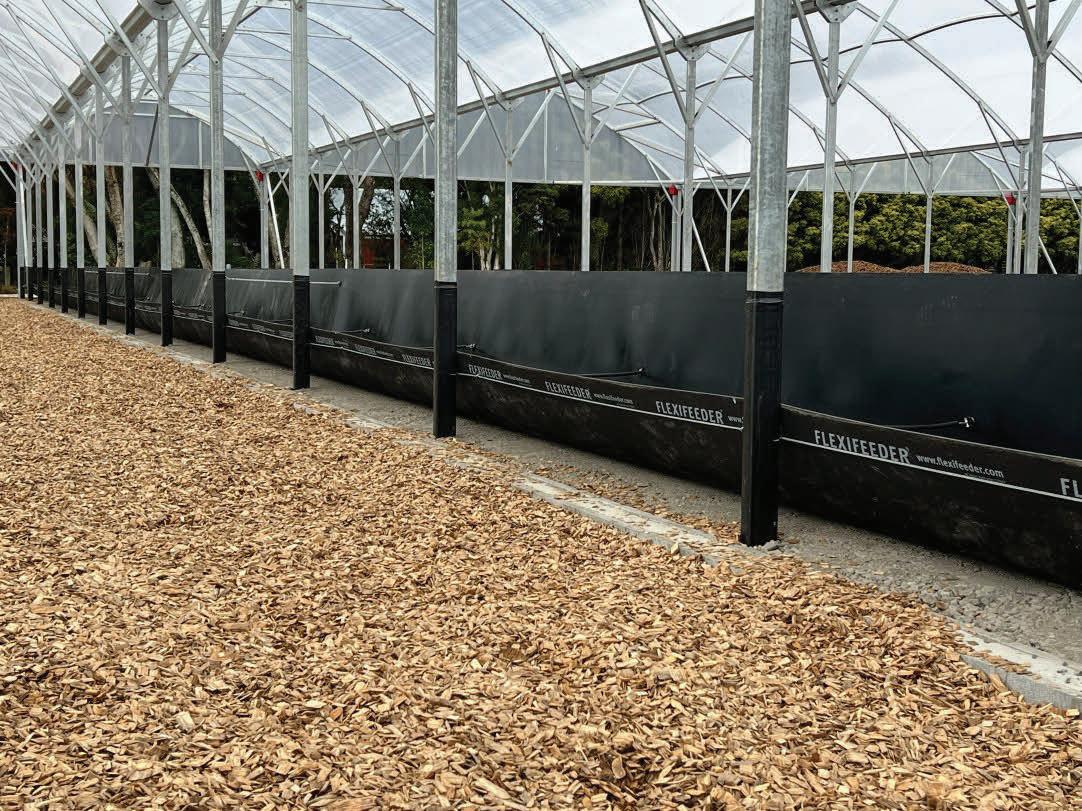
and that low-emitting bulls can pass this trait to their daughters.
“This new facility will allow us to advance the next critical step in our researchmeasuring emissions from these daughters during their first milking season this year.”
The first cohort of Pamu cows have since been introduced to the purpose-built barn where their methane measurements will be collected to validate heritability and provide crucial data to bring farmers one step closer to breeding cows with lower methane emissions.



Professor Jan Thomas who has been the VC at the university since 2017.
Pierre Venter takes up his new role as vice chancellor at Massey University next February it will just be a matter of taking a few steps across the road to get to his new office at the Palmerston North Campus.
Venter is director of Fonterra’s Research and Development Centre, located opposite the main entrance to Massey University. He replaces
Venter was born and educated in South Africa, and before coming to NZ in 2011 to join Fonterra, he was a researcher and later professor at the Central University of Technology in the Free State. He holds a PhD in Microbiology.
At Fonterra he has held several senior science roles all based at the companies R&D Centre in Palmerston North. In 2019 he was appointed as GM of

Innovation Services and in 2023 became the director of the facility which is focused on developing what he calls the “next generation dairy solutions”.
Massey chancellor Alistair Davis says Venter’s appointment marks a significant milestone for the university. He says his leadership, strategic insight, and commitment to innovation and inclusion will be instrumental in strengthening its impact both locally and globally.
He says universities
are evolving to handle new technologies such as artificial intelligence and the commodification of knowledge and believes that Venter’s experience of both academia and applying research into the commercial world will bring a fresh lens to this sector-wide challenge. Davis says his dualsector experience also positions him well to lead Massey from both an academic standpoint and as the leader of a large commercial research organisation.
“With Professor
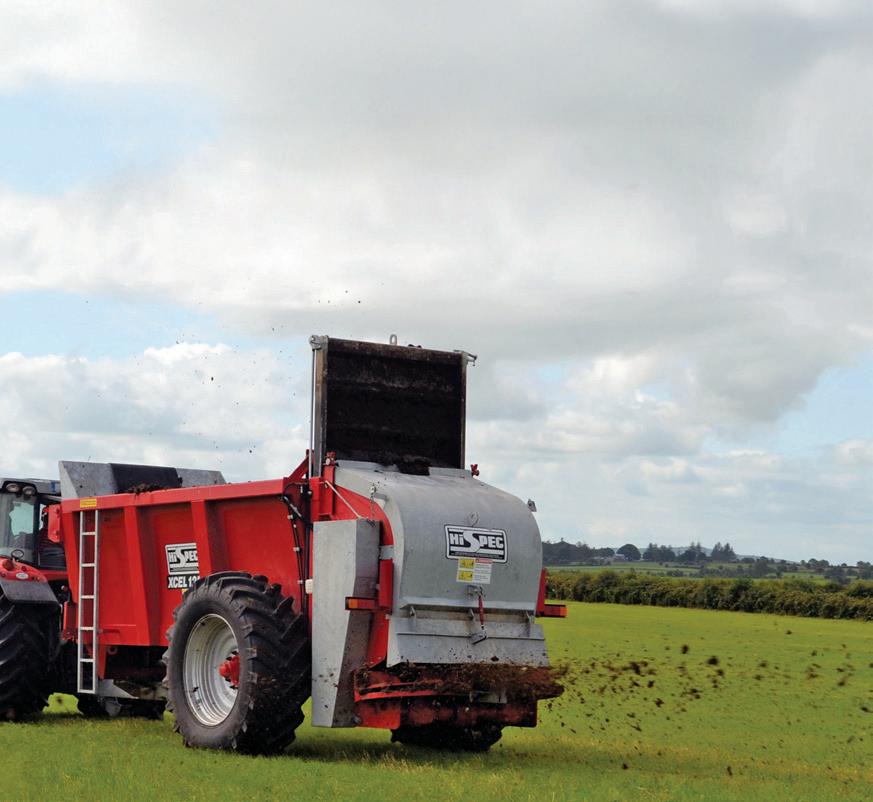
Venter coming from NZ’s largest exporter, and an organisation deeply embedded in the agricultural sector, Massey is reinforcing its highly regarded reputation as an applied university at the heart of Aotearoa New Zealand’s economy,” he says.

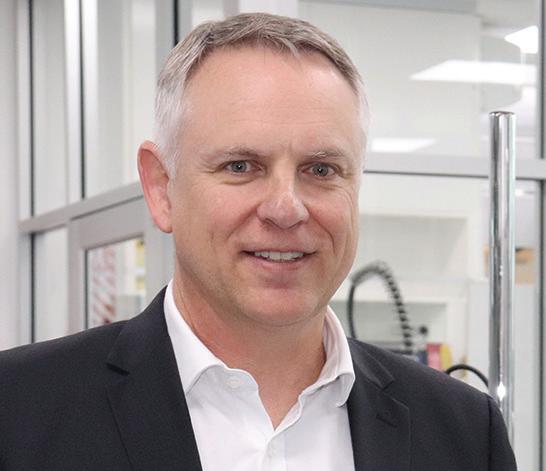
PROFESSOR PIERRE Venter says what drew him to Massey was its proud heritage, clear sense of purpose, and global reach and says it plays a vital role in in areas that matter most to New Zealand.
“I see enormous potential to strengthen Massey’s leadership position both here and globally, to further modernise how it delivers education, and to build new partnerships with industry and government. Massey has the scale and capability to lead the next generation of universities, and I’m excited to work with staff, students, and council to bring that vision to life,” he says.
Venter is no stranger to the staff at Massey. Fonterra and Massey University have very close links and many of the 350 staff at the Fonterra R&D Centre are Massey graduates. Fonterra, Massey and the Riddet Institute, which is also based
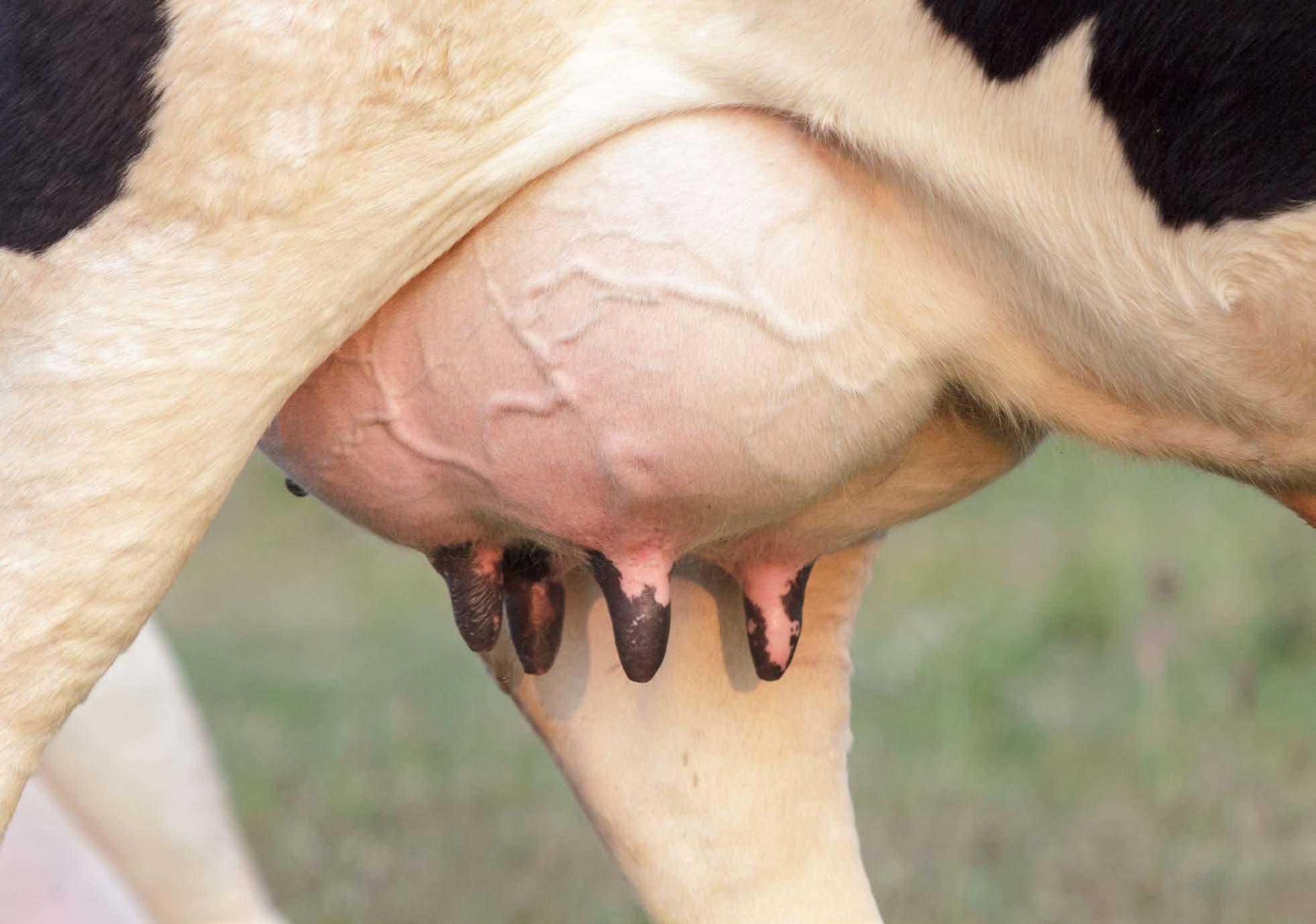
on the sprawling Massey Campus, work closely together and will continue to do so. His appointment also comes at a time when more students are enrolling in agricultural courses at Massey University.
In an interview with Dairy News earlier this year, Professor Venter talked about the need to produce dairy products that benefit the growing elderly population and to improve the overall health of all people.
“The way we see the trend globally is that if you consume more of the right protein at the right time you typically postpone or change health outcomes for the,” he says. In the same interview Pierre Venter praised NZ dairy farmers for the awesome job they do, not only by putting in the hours they do to produce milk, but also the quality of their milk that goes into the vat. Venter starts on February 2, 2026.
And there’s plenty more reasons why you should stay on top of hygiene.
Agmax’s TeatSweet does just that. A unique powdered teatspray in a sachet, trusted by Kiwi farmers for over three decades. Fast-acting, convenient, and proven against mastitis bacteria, TeatSweet helps keeps your girls teats healthy and her milk quality high. Come visit Agmax Country, where milk quality is everything. Available in 5kg and 12kg pails.
AN INCREASING number of students are doing agricultural and horticultural degrees at Massey University by distant learning.
The head of the agriculture and horticulture school at Massey, Professor Paul Kenyon, says the number of students doing this has risen significantly over the past three to four years. He says the cost of tertiary education in NZ is quite high and when people consider the loss of earnings during that period of study, it makes it a bit hard for them.
“So, it makes sense for some people to earn money while they study. Traditionally it has been mature students taking this pathway, but now we are seeing more school leavers deciding to opt for distant learning,” he told Dairy News
Kenyon says doing a degree by distant learning may take between four to six years as opposed to the normal three years. He says those doing their degree this way may miss out a bit on the community feeling by not being on campus with other students. But he says, depending on their course, they can still come back to the campus for short or block courses and they do get all the information that other students to get on campus.
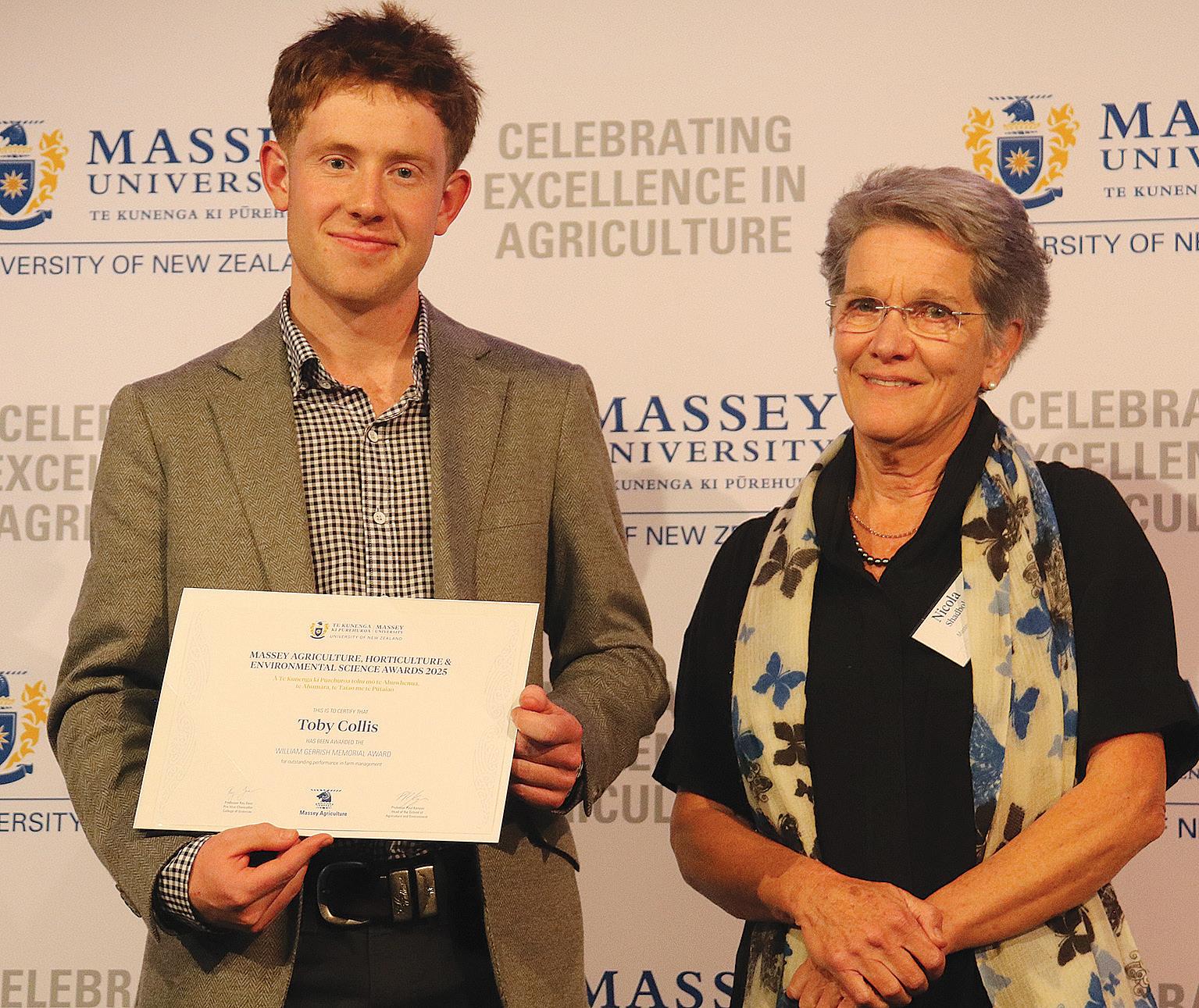
RECENTLY MASSEY University held a special gala evening to recognise its top students. More than 250 students, lecturers and representatives of the primary sector attended the event which is now in its 32nd year.
Among the recipients of the awards was 25-year-old Kelsey Norrie who works on the family dairy farm in Canterbury and juggles her studies with her day job. She won the academic prize for a first-year student in Agriculture and Horticulture.
She grew up on the farm and really enjoyed being outdoors, so always saw part of her future being tied to farming and agriculture.


“I originally tried university, but it wasn’t my cup of tea being full time on campus, so I ended up full time dairy farming. I then went to the Primary ITO, found it a total breeze and had this thirst for knowledge, so I looked at what else could be out there of interest and I came across agribusiness at Massey through distance study, so gave it a go,” she says.
Norrie says the amount of study time varies according to the paper she is doing; the recommended time per paper per week is 10 hours.
“I love being able to combine the practical with the theory. When I was a full-time student the theory was great, but I felt that I couldn’t relate
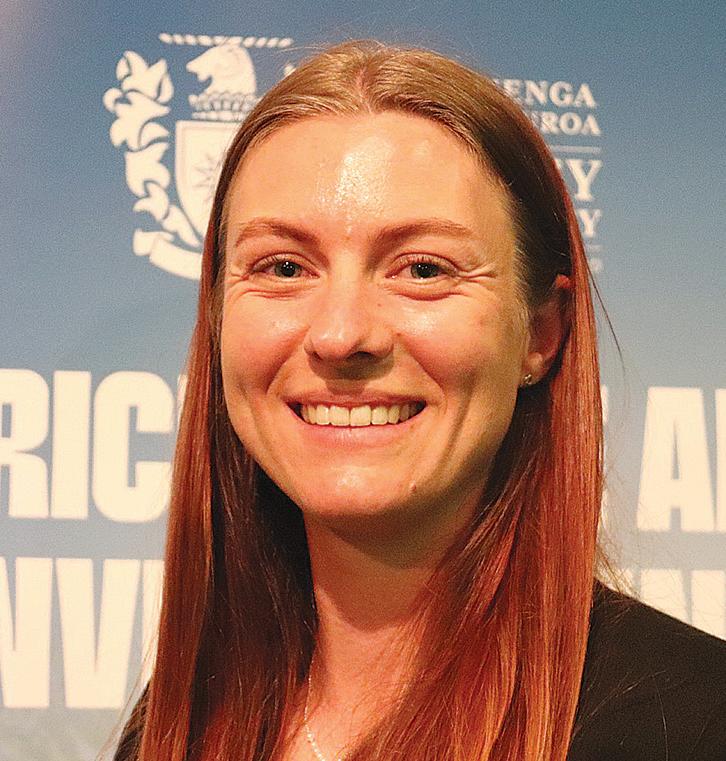
it to the real world the same as I can now.”
She says being out on farm and studying puts everything in perspective and she’s experiencing the best of both worlds at the same time.
“Massey has a history of teaching by distance one way of another for almost 60 years, so we are well set up for it and well known for it,” he says.
Kenyon says the other good news for the School of Agriculture and Horticulture is the increase in enrolments for these subjects at Massey. He says these have been growing steadily over the past three or four years and puts this down to the fact that there now seems to be an appreciation of
the importance of the primary sector to the NZ economy.
“And the realisation of students at secondary school about the range of roles and career options that the primary sector offers,” he says.
Kenyon points to the fact that more than 200 secondary schools are teaching agriculture at NCEA level and that there is a large cohort of enthusiastic and well qualified teachers in these schools.

YOUNG PEOPLE are critical to the future of NZ farming.
That was the message from Associate Agriculture Minister Mark Patterson to Massey University’s top agricultural graduates and students at the special prizegiving event in Palmerston North recently.
Patterson says NZ is going through a technological revolution and old sheep farmers like himself are struggling to get their heads around it.
“But the young minds that come here are the ones who can unlock the potential that’s out there,” he says.
Patterson says the event was impressive and uplifting. He says agriculture is a calling and one that is growing, with ag student numbers up for next year at both Massey and Lincoln Universities.
All told, prizes were given out for 14 categories.
Arguably the most prestigious prize is the William Gearish Memorial Award which not only recognises an outstanding farm management student but one who has demonstrated a high level of personal integrity, intellectual curiosity, vision and social conscience. The winner of this award was Toby Collis who has just completed an agribusiness degree majoring in rural valuation. He comes from an established farming family in the Manawatu and says his love of agriculture has been passed down by five generations before him.
Collis says initially he will take up a consultancy role but long term he is looking at roles where he can help others to create new opportunities.



Up to 50mm Inlet
Flows up to 600L/min
For Storage Tanks
Easy Access to Valve
Avoids Starting & Stopping of Pump When Tank is Filling



THE
revised 2050 biogenic methane target range of 14–24% by 2050 is being welcomed by dairy farmers.
DairyNZ chair Tracy Brown said the new target range aligns closely with the recent Independent Methane Science and Target Review conducted by leading NZ scientists, including Professor Dave Frame and climate and farm systems expert Professor Nicola Shadbolt.
The review recommended that New Zealand cut biogenic methane emissions by 14-24% by 2050 to achieve no additional warming from 2017 levels, acknowledging the different effects of short vs long-lived greenhouse gases.
“It is important that the target range better reflects the latest science on methane’s warming impact, while also acknowledging the practical realities farmers
face on farm,” says Brown.
“Farmers have already made progress, with agricultural emissions stabilising over the past decade through efficiency gains and environmental improvements. Methane emissions from dairy cattle are down 4.1% since 2017.”
She says the announcement will provide certainty for farmers.
“We know that at the top end, 24% will be extremely challenging without new mitigation technologies. It’s important there is accelerated investment in research and that tools to farmers are fast-tracked to ensure targets can be achieved over time.
“We are investing in solutions and work with sector partners such as AgriZeroNZ and the Ag Emissions Centre to tackle New Zealand’s agricultural methane challenge through a combination of targeted investment,

scientific innovation, and commercial partnerships.
“DairyNZ is continuing to power our science in this area. Our Emissions and Profitability project has shown how farmers can increase profitability and lower emissions by increasing homegrown feed and reducing purchased feed with high-
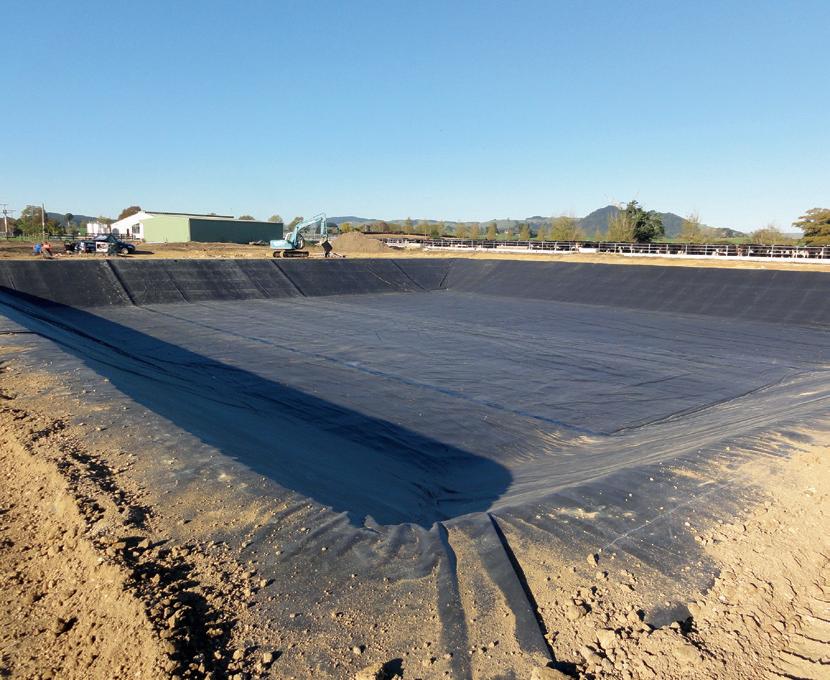
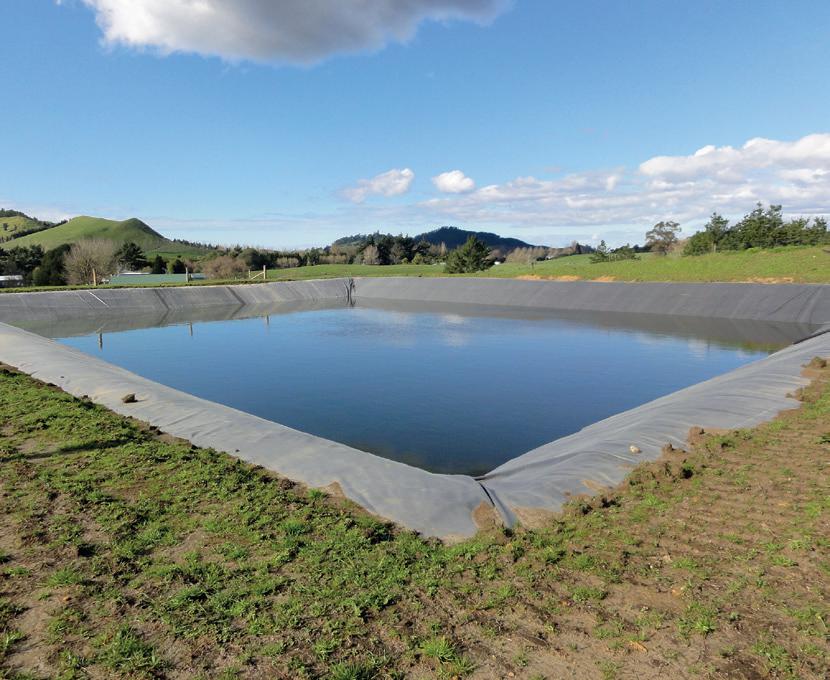
•
embedded emissions.
“We are two years into the four-year Emissions4Pasture joint New ZealandIreland research programme, with early results suggesting cows grazing fresh forages emit less methane than currently estimated. By understanding the factors that influence methane
emissions, we can ensure that any future methane mitigations work well in our pasture-based systems.
“Sustaining the viability of dairying, and agriculture in general, is critical to New Zealand’s future prosperity,” says Brown.

@rural_news facebook.com/ruralnews
•Rolls up to 15m wide, therefore fewer joins which means less risk, faster installation and shorter good weather window required.
• Design assistance and volume calculations available.
Material warranty from global company - Elevate, a brand of Holcim (formerly Firestone Building Products)
7266
•Nationwide trained and accredited installation contractors.
• Future proof - dependable performance, 50 year life expectancy even when exposed, 20 year material warranty
•Over 120 million square meters installed worldwide.
•30 years in the NZ lining business.



MARK DANIEL markd@ruralnews.co.nz
A FUNCTION at Parliament on 7th October brought together central government decision-makers, MPs, industry stakeholders and commercial partners to highlight the need for strategic investment in the future of Fieldays and its home, the Mystery Creek Events Centre campus.
The New Zealand Agricultural Fieldays Society, led by Society Board chair Jenni Vernon and chief executive Richard Lindroos, highlighted Fieldays’ position as a significant event and a driver of New Zealand’s economy - claimed to contribute over $500 million annually - with a key role in supporting the country’s innovation ecosystem and rural wellbeing.
Hon Todd McClay, Minister for Trade, Investment, and Agriculture, shared this sentiment, saying, “Fieldays is a highlight of the rural calendar, showcasing the New Zealand primary sector at its worldleading best.”
For the Society and Fieldays to continue delivering on its advocacy of innovation, education, and globalisation, significant and sustained investment is essential. While the Society currently generates income through its own event, Fieldays, plus through venue hire for other events at Mystery Creek, the team suggested that evolving the campus to be truly fit for purpose will require external support from central government.
The Society says it is seeking a partnership model, “not a handout - but a hand-up”, with an amount of $5m per annum being suggested to deliver shared outcomes and long-term value, industry sustainability, iwi partnerships, tourism, and emergency readiness.
Each year, Fieldays attracts international decision-makers, with 43 business delegations and 23 embassies attending in 2025. Its ongoing alignment with New Zealand Trade and Enterprise (NZTE) may see this international visitation continue to grow as Fieldays expands its global presence, showcasing the country’s agricultural leadership on the world stage.
Recently in an interview, Prime Minister Christopher Luxon highlighted the importance of Fieldays, saying Fieldays is a national institution, “one that supports innovation, fosters rural wellbeing, builds international connections, and brings town and country together in a uniquely New Zealand way”.
To future-proof infrastructure and ensure the longevity of an event that extends well beyond its four days on site, the Society believes central government has an important role to play in helping this national institution deliver long-term value for New Zealand.
REBECCA DRAKE
IN A world where technology is reshaping every facet of our lives, the future of farming stands at a crossroads; one where curiosity, innovation, and crossdisciplinary skills will define the next generation of agricultural leaders.
Events like Tauranga’s STEM Festival (STEMFest), New Zealand’s largest celebration of science, technology, engineering, and mathematics, are not just about showcasing gadgets or scientific breakthroughs. They are about planting seeds of curiosity in young minds and nurturing the problem-solvers who will shape the future of many sectors, including farming.
At this year’s STEMFest, more than 6000 children, parents,
educators, and industry professionals gathered to explore the wonders of STEM. The festival’s mission is clear: spark curiosity and show children the diverse possibilities that STEM offers. From immersive virtual reality to machine learning farm simulations, the event demonstrated how rapidly technology is evolving and how adaptable today’s youth is to these changes.
What makes STEMFest truly special is its ability to break down silos. The future of agriculture will require expertise in engineering, biotechnology, software development, and environmental sciences.
Some of the careers that will drive farming forward haven’t even been imagined yet. By showcasing a wide array of STEM-based activities, science experiments,
problem-solving challenges, and technical games, the festival fosters an environment where exploration is encouraged, creativity is celebrated, and critical thinking is developed.
This matters because the challenges facing farming are complex and ever-changing. Climate change, resource management, and the desire for sustainable practices demand innovative solutions.
Like those before, the next generation of farmers will need to be resilient, adaptable, and equipped with the skills to think outside the box – in a world that’s evolving faster than ever before. STEMFest provides a space for children to experiment, ask questions, and learn that failure is just another step toward discovery. These are essential skills
for tackling the big issues, whether it’s developing drought-resistant crops, designing precision agriculture tools, or creating new ways to monitor soil health.
One of the most inspiring aspects of STEMFest is the enthusiasm and curiosity shown by attendees of all ages. Children and parents alike engaged with hands-on activities, asked thoughtful questions, and imagined what a future in STEM might look like. This kind of engagement is crucial for showcasing our amazing primary sector to urban and rural kids and building a resilient farming sector.
By empowering young people early in their lives, we encourage them to become the innovators and problemsolvers who will drive agriculture forward.
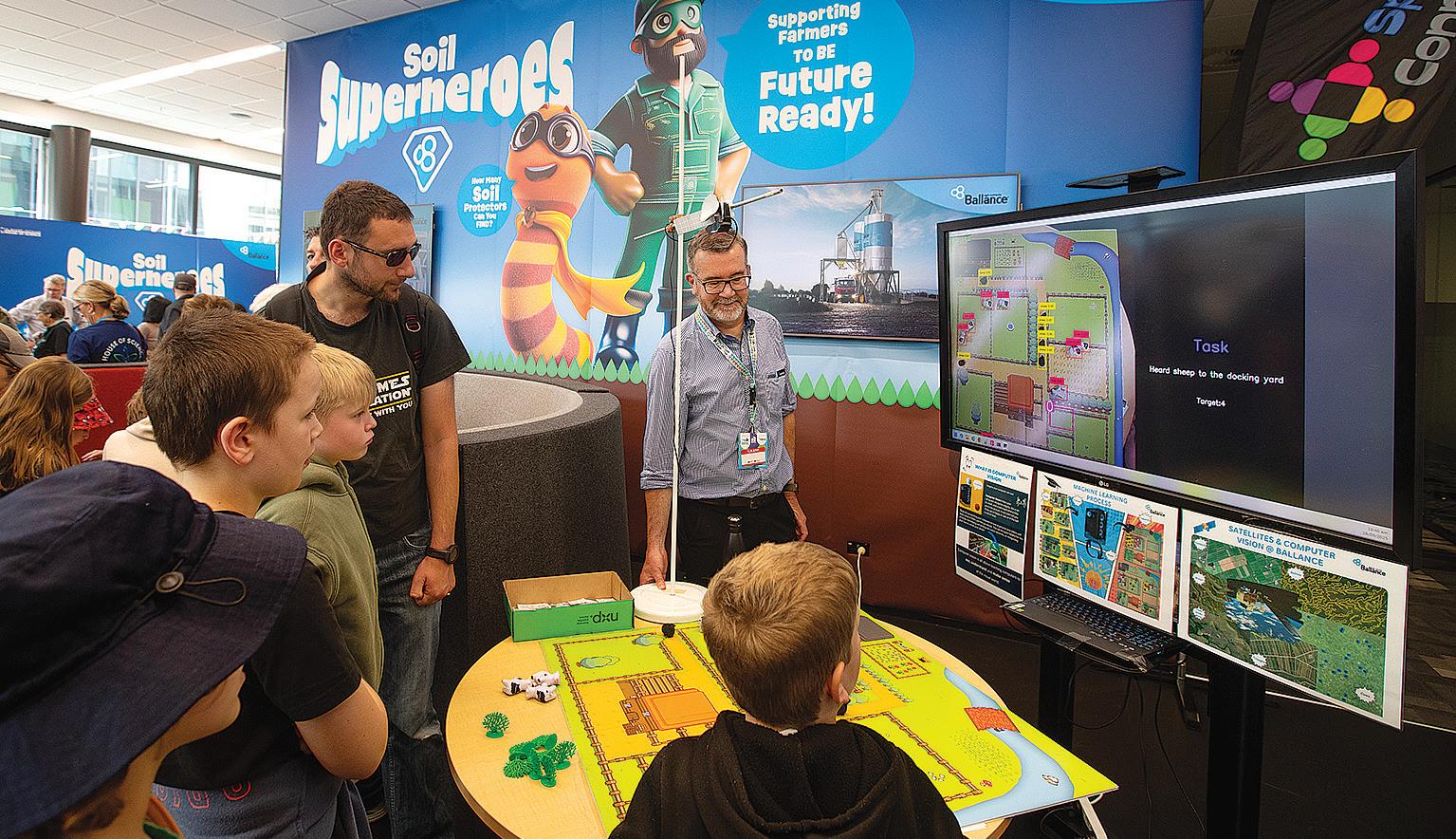
Ballance’s partnerships with organisations such as House of Science, and its focus on the science of soil, highlight how foundational STEM knowledge is to supporting plant and animal life and, by extension, the entire food system.
Looking ahead, the future of farming will be shaped by those who are curious enough to challenge the status quo
and bold enough to dream up new solutions. Events like STEMFest are more than just celebrations, they are investments in the minds that will one day help solve the world’s most pressing agricultural challenges. By fostering imagination, creativity, and a love of learning, STEMFest is helping to ensure that the next generation is ready to build a resilient, innovative, and
sustainable future for farming.
In the end, the true legacy of STEMFest will not be measured by the number of attendees or the technologies showcased, but by the curiosity it inspires and the doors it opens for young people. The future of farming depends on it.
• Rebecca Drake is Innovation Project Lead, Ballance Agri-Nutrients and STEMFest ambassador
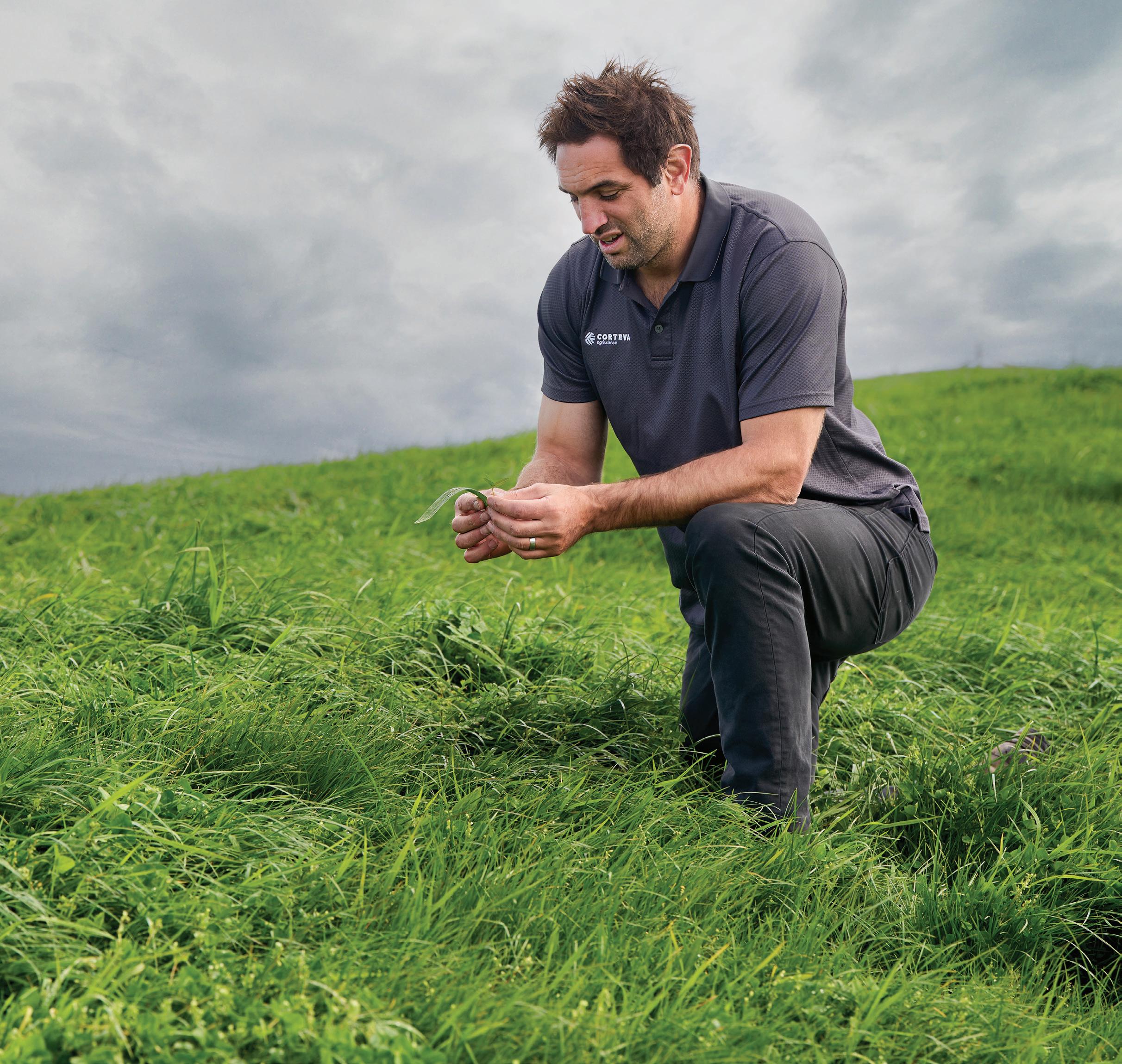
Our portfolio of powerful, proven products has helped farmers from one end of the country to the other create and maintain thriving businesses, and has earned us an excellent reputation as pasture protection and brushweed specialists.
Our extensive suite of herbicides provides farmers everything they need to win the war against weeds and brushweeds.

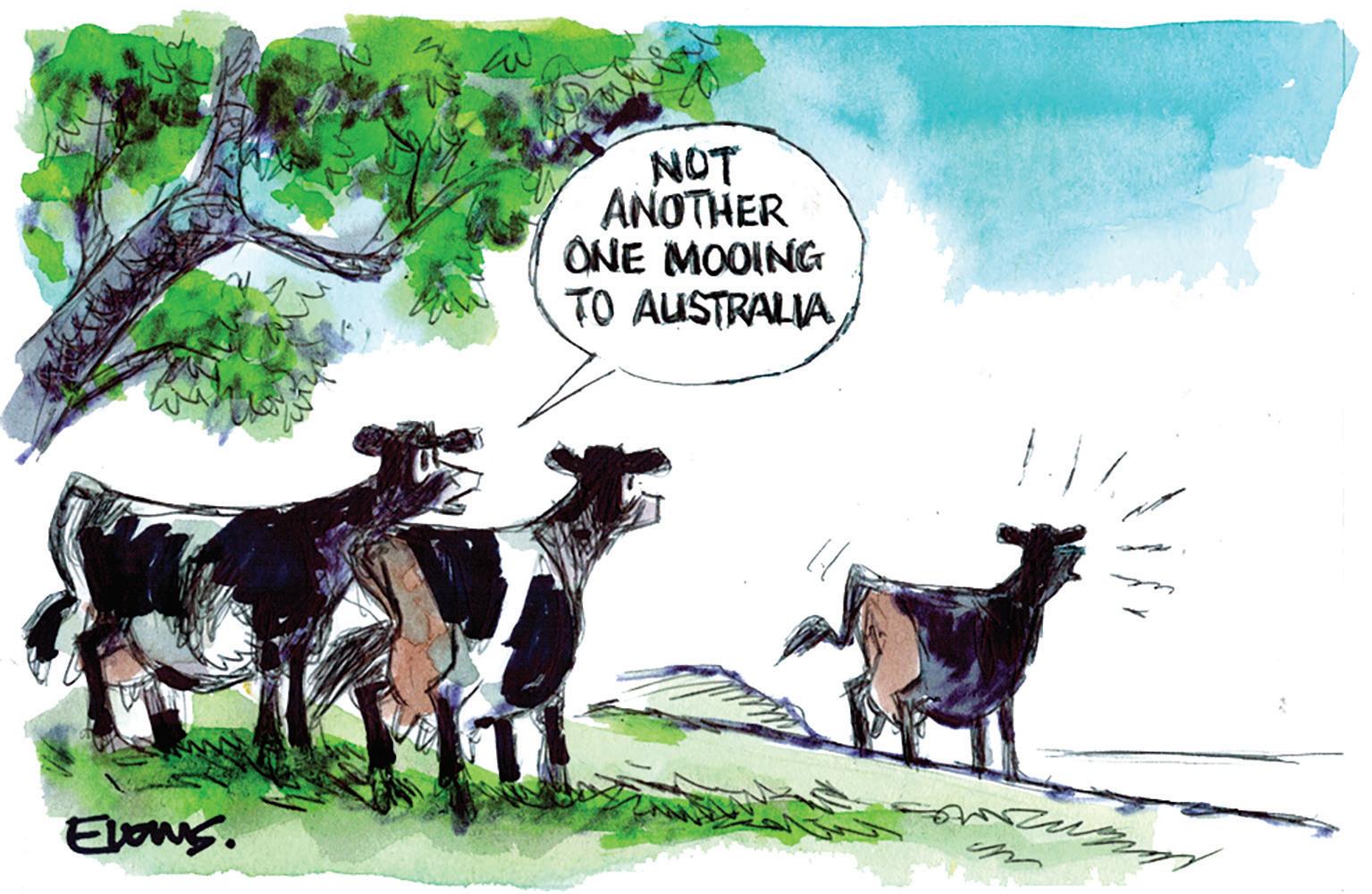
Winston’s crusade
A SHORT-TERM sugar hit. That’s what NZ First leader Winston Peters is calling the proposed sale of Fonterra’s consumer and associated businesses.
He has ratcheted up attacks on Fonterra bosses, arguing the sale is not in New Zealand’s long-term interest and relinquishes control of valuable national assets.
With the election around the corner, Peters is turning to one of his favourite and proven tactics – playing the crusader guarding New Zealand’s economic interests.
Voting on the sale started earlier this month, so while Peters got the headline he wanted, it remains to be seen if his antics have any impact on how the vote turns out.
Sir Lockwood HAS THE horse or horses bolted in parliament? Certainly, the reins need to be put on many of our so-called representatives in parliament. Their childish behaviour –acting up, slinging insults, making snide comments, with some dressed like they were going to the beach.
When Sir Lockwood Smith was the Speaker of the House many years ago, he commanded and demanded order and dignity. For whatever reason, Speakers in recent times have failed to follow his example and parliament has frequently degenerated into chaos.
Milking It wonders, is it too late for Gerry Brownlee to really put his foot down and stamp out the disrespectful behaviour that has turned parliamentary sessions into a third-rate soap opera?
AT A time when dairy prices are at record highs, no one was expecting the world’s second largest dairy player to slash jobs.
That’s exactly what Nestle’s new CEO Philipp Navratil is doing though.
The global giant is laying off 16,000 employees over the next two years as part of its measures to reduce costs.
The layoffs will impact 12,000 white-collar professionals across functions and geographies, as well as 4000 employees in its manufacturing and supply chain.
Nestle employs 277,000 employees worldwide. The layoffs are almost 6% of its total headcount.
“The world is changing and Nestle needs to change faster. This will include making hard but necessary decisions to reduce headcount over the next two years,” Navratil says.


Head Office: Lower Ground Floor, 29 Northcroft St, Takapuna, Auckland 0622
Phone 09-307 0399.
Postal Address: PO Box 331100, Takapuna, Auckland 0740
Published by: Rural News Group
Printed by: Inkwise NZ Ltd
Contacts: Editorial: sudeshk@ruralnews.co.nz
Advertising material: beckyw@ruralnews.co.nz
Rural News on-line: www.ruralnews.co.nz
Subscriptions: subsrndn@ruralnews.co.nz
MICROPLASTICS ARE turning up just about everywhere in the global food supply, including in fish, cups of tea, and even in vegetables freshly plucked from the ground.
And now, a recent peerreviewed study published in the journal NPJ Science of Food says they’re swirling around in our milk too.
Researchers from Italy’s University of Padua shared their findings after analysing microplastics in dairy products, including milk, fresh cheese, and ripened cheese. The team examined 28 retail samples, including cartons of milk, 10 fresh cheeses aged less than one month, and 14 ripened cheeses aged more than four months.
They found microplastic particles in 26 out of 28 products tested, most often identifying polyethylene terephthalate, also known as PET, a plastic commonly used in food packaging and plastic bottles, along with polyethylene, the most widely used plastic, and polypropylene, a thermoplastic polymer also frequently used in food packaging.
Publisher: Brian Hight Ph 09-307 0399
General Manager: Adam Fricker Ph 021-842 226
Editor: Sudesh Kissun Ph 021-963 177
Machinery Editor: Mark Daniel Ph 021-906 723 markd@ruralnews.co.nz
Reporters: Peter Burke Ph 021-224 2184 peterb@ruralnews.co.nz
Subscriptions: Julie Beech Ph 021-190 3144
Production: Becky Williams Ph 021-100 4831
Digital Strategist: Jessica Marshall Ph 021 0232 6446
IN THE past weeks, much has been said and written about one of New Zealand’s greatest prime ministers, James Brendan Bolger, who died just a few months after his 90th birthday. In the days of his premiership, he was sometimes maligned for his progressive and smart thinking which didn’t always resonate well with members of his own party. While a loyal National Party man, he was just as loyal to his strong Irish Catholic background that formed the basis of his personal philosophy of life, his policies and his attitudes to his fellow human beings.
Sure, he was a hard-nosed politician who could mix it with the best of his colleagues and others, but overlaying this was his innate compassion, unpretentiousness and humility. People speak glowingly of the man who took time to talk to people, sick people he hardly knew, to young people and even to journalists – always taking a genuine interest in anyone he met.
Bolger gave a lifetime of service to the primary sector, beginning as a 15-year-old milking cows in Taranaki, then as a farmer in his own right, Federated Farmers and then through his 26 years in parliament and, in particular, his outstanding leadership as Prime Minister and later as ambassador to the USA.
He had an enduring love of NZ, wanted the best for it and gave it his best. His Irish background gave him a unique insight into Māori and the effects on them of British colonisation – something the Irish endured for centuries. His leadership in the treaty settlements process and his determination to see Māori right will probably rank as his greatest achievement. He took up their cause like another great Prime Minister, Peter Fraser, did in the 1930s and ‘40s.
Bolger was a man who stuck to his beliefs and whose legacy will see him recognised as one of the greatest prime ministers and leaders that this country has ever produced.
AUCKLAND SALES CONTACT: Stephen Pollard Ph 021-963 166 stephenp@ruralnews.co.nz
WAIKATO & WELLINGTON SALES CONTACT: Lisa Wise Ph 027-369 9218 lisaw@ruralnews.co.nz
SOUTH ISLAND SALES REPRESENTATIVE: Kaye Sutherland Ph 021-221 1994 kayes@ruralnews.co.nz
it’s needed most.
AS THE season progresses, attention on farm is now turning to mating.
While the feed situation remains tight, confidence in the payout has allowed many farmers to keep pushing production without compromising cow body condition. For most, the strategy has been to maintain high levels of feed input to protect production through the back end of calving and into mating.
It has been great to see the rural economy in such good shape. We are seeing a strong commitment from farmers to keep cows in optimal condition, despite the recent weather conditions, which reflects both the confidence in the dairy sector and the resilience of farming communities across New Zealand. Our role has been to support that — ensuring quality feed continues to reach farms when
Across much of the country, farmers have been facing an unusually tough spring. The combination of poor grass growth and variable weather has led to an increased reliance on supplementary feed, driving demand for stockfood over the past couple of months.
At J Swap Stockfood, we’ve seen this demand first-hand. Our team has been working around the clock to keep feed moving to farms, ensuring that delivery schedules remain as tight as possible despite the challenges. Our trucks have been running 24 hours a day, seven days a week, delivering straights and blends across the North and South Islands.
Managing through shortages
With demand spiking nationwide and much of our raw material imported from overseas, product shortages have been an ongoing challenge. Weather disruptions have compounded the
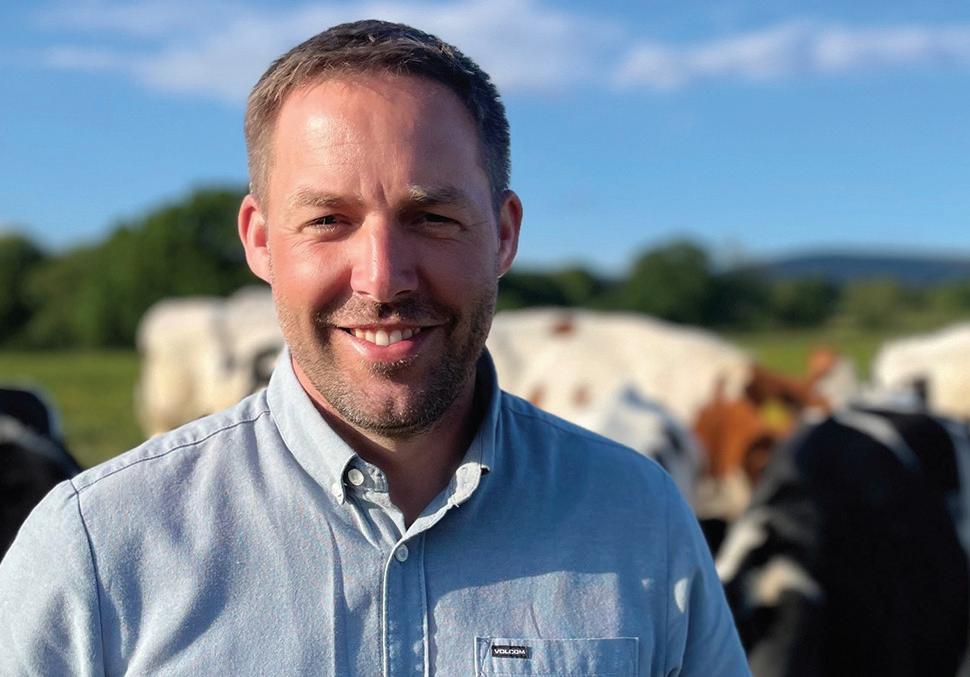
situation, with shipping delays and irregular docking schedules affecting supply lines. Prolonged periods of wind and swell at ports have delayed vessels from Australia and Southeast Asia, meaning that at times, feed has been arriving later than planned.
Despite these pressures, our logistics and operations teams have worked tirelessly to prioritise deliveries and manage supply across the network. Our ability to store and distribute from multiple sites — combined with owning and operating our own fleet
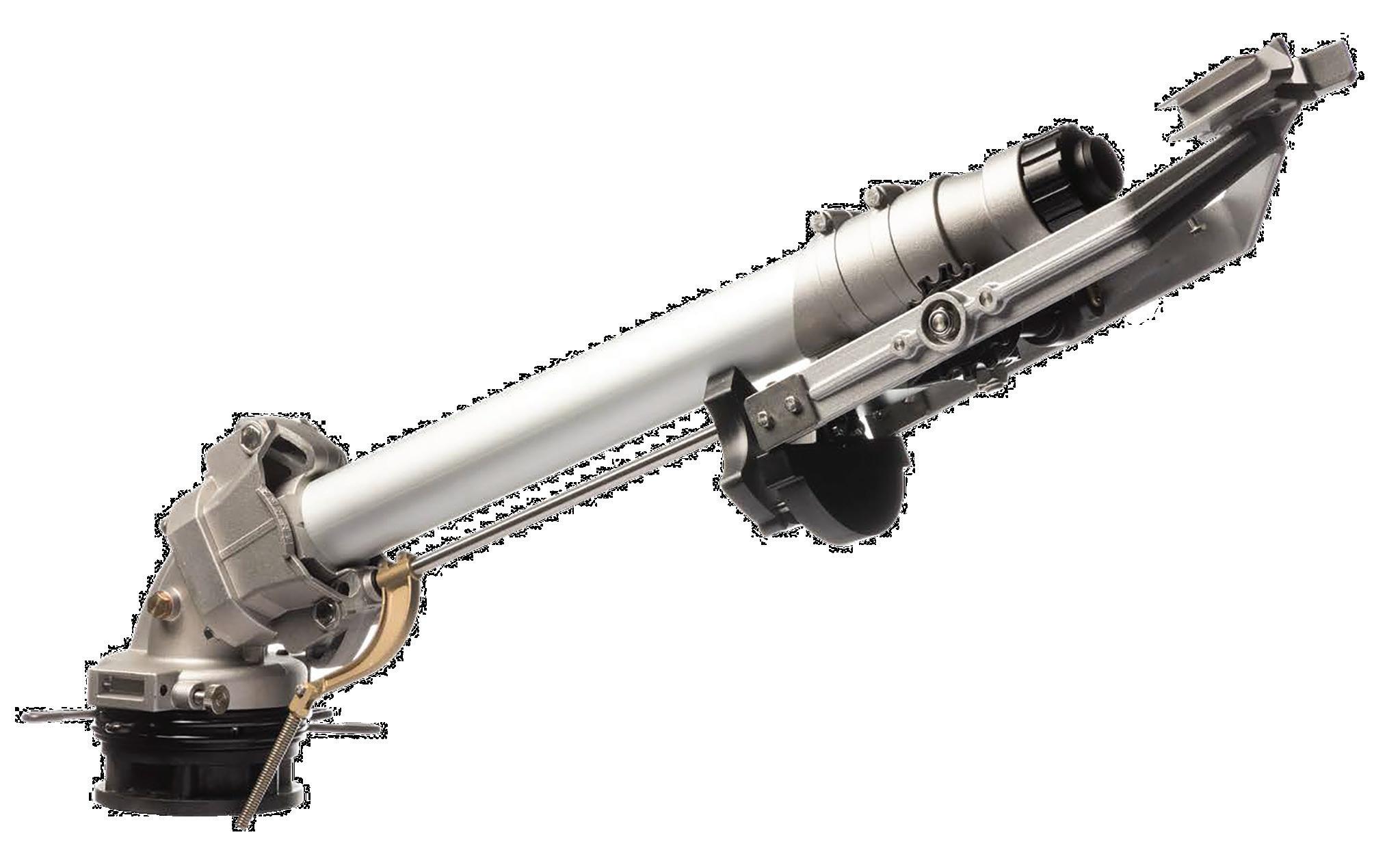
of trucks — gives us the flexibility to adapt quickly when conditions change.
The grass is growing
As soil temperatures lift and pastures recover, feed conditions are beginning to stabilise across much of New Zealand. While the pressure is easing, many farms are still feeding at higher levels to protect body condition and maintain milk flow through mating.
J Swap Stockfood continues to work alongside customers to adjust feed plans as conditions change — reviewing blend ratios, optimising protein and energy levels, and ensuring timely delivery as demand patterns shift. With improved grass growth ahead, the focus is now on consistency, recovery, and getting the most out of every tonne of feed through the second half of spring.
• Joe Hardman is stockfood sales manager for J Swap Stockfoods. Contact him on joe.hardman@jswap.co.nz.
THE KEY to a dairy system that generates high profit with a low emissions intensity is using low footprint feed, says Fonterra program manager on-farm excellence, Louise Cook.
Cook spoke at the recent Lincoln University Dairy Farm (LUDF) spring focus day, where she outlined the Emissions and Profitability Project, a collaboration between Fonterra, DairyNZ’s Dairybase and LIC.
The project analysed financials, physical farm characteristics and animal information data from 8000 farms over the last four seasons, combined into an anonymised database “of unprecedented scale”.
While the analysis concentrated on Waikato and Canterbury because of the wealth of data from those provinces, it found similar results elsewhere.
Cook said one of the most interesting findings was that there’s no relationship between emissions and profitability, so a high profitability farm could have low emissions intensity.
“But what we did find is when we looked
at the data was that high profitability and low emissions intensity – that ‘Golden Circle’ – occurs when farmers have the majority of their feed coming from low footprint feed sources.”
Cook said low footprint feed was first and foremost homegrown feed, grown and eaten on the dairy platform, but it also included comparably-produced feeds bought in or winter grazed off farm.
All other feeds would be considered high or very high footprint category, she said.
“What we saw is that farms that were low emissions intensity and high profitability, they had low footprint feeds as the majority of their diet.”
Those farms were also doing well in productivity as measured in milksolids per cow or per kilo of live weight, although not necessarily exceptionally well.
The study divided farms into four quadrants, depending on whether they were high or low profitability, and high or low emissions intensity.
Comparing the highprofit/low-emissions farms (Q1) with highprofit/high-emissions farms (Q2) showed that Q1 farms achieved

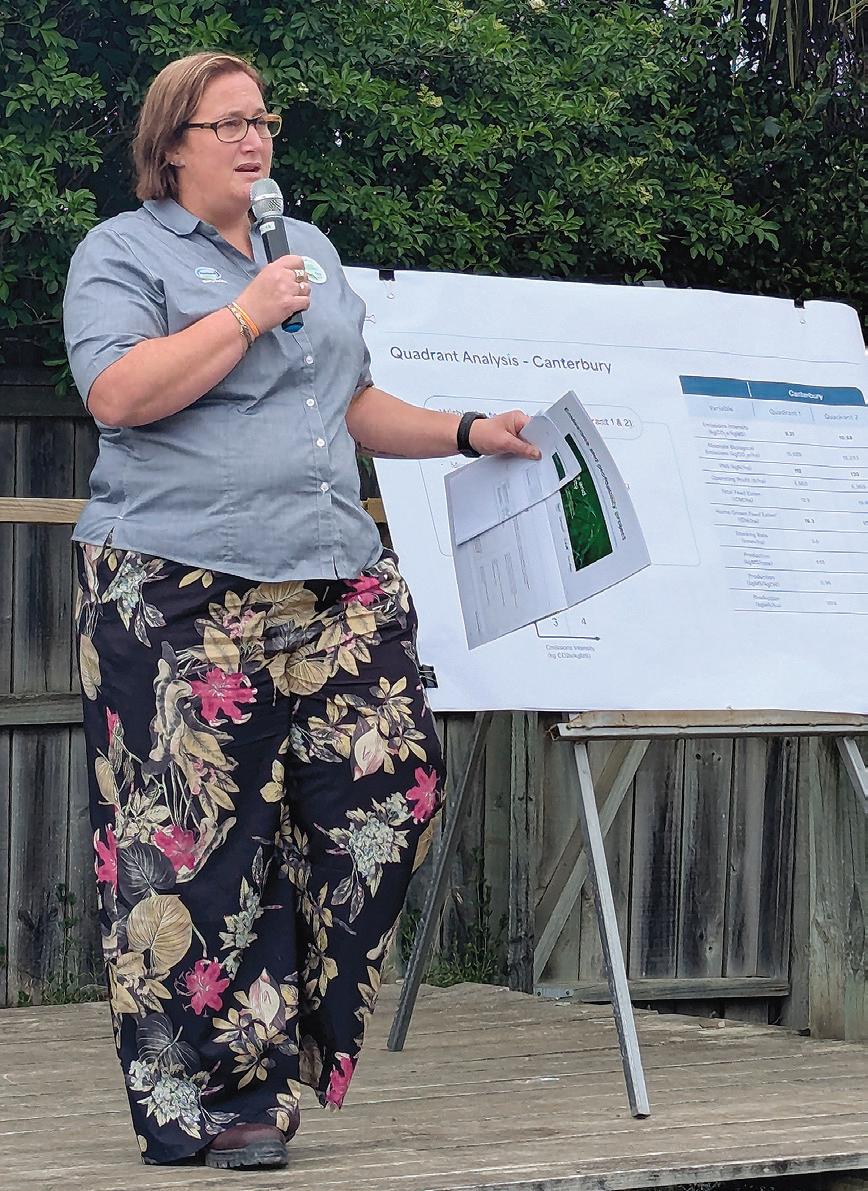
equal, and in some cases, slightly higher, profitability.
The specific figures for the Canterbury farms in the study showed Q1 with emissions intensity of
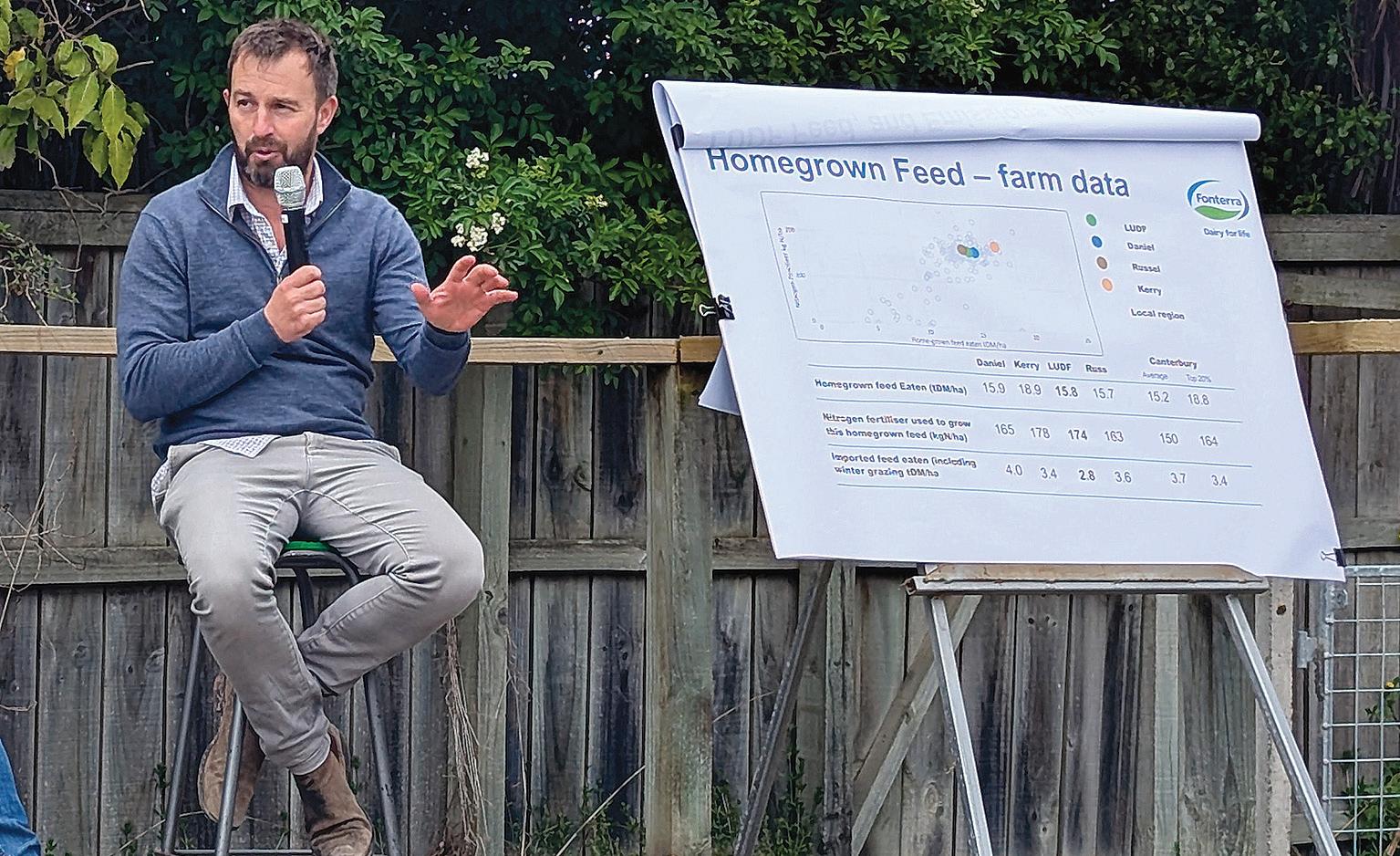
emissions, operating profit, total feed eaten, stocking rates and production.
9.31 kg CO2/kg MS - 12% lower than Q2’s 10.58kg.
There were no significant differences between Q1 and Q2 on most other metrics, including absolute
But there were significant differences between them in homegrown feed eaten, which came to 15.7 tDM/ ha for Q2 compared with 16.3 tDM/ha for Q1; and in purchased N surplus – 130 kgN/ha for Q2 compared with 112 for Q1.
“What’s interesting is
in these q1 farms, 1.8% of all feed eaten is high emissions footprint. In Q2, 8% of all feed eaten is high emissions footprint,” said Cook.
“So, there’s a really big difference there. Not only in the amount of supplement but also the type of supplement being brought in.”
Another finding was that the high profit low emissions intensity farms could be anywhere, and Cook presented a map of Canterbury showing quadrant 1 farms spread evenly across the whole province. She said she had met Culverden farmers who were firmly convinced those farms could only be in midcentral Canterbury because it had more growing days and more reliable irrigation, but the study showed that was not the case.
“So, whilst we talk about homegrown feed being vital, you don’t have to have the highest homegrown feed, you just have to be a farm that’s making sure all of the feed you’re bringing in is actually really converting itself through into milk and product, and there’s a huge range in what we see there.”
Cook said the study arose out of Fonterra’s ambitions to lower emissions.
She said while there was “a whole bunch of stuff” known to reduce emissions intensity by increasing milksolids per cow – such as simply buying in more feed – farmers questioned whether that could risk their profitability. However, Fonterra did not have a good link through to that financial information.

FEWER BOBBY calves are heading to the works this season, as more dairy farmers recognise the value of rearing calves for beef.
Industry data shows bobby calf numbers are down significantly –18.5% in the North Island and 28% in the South Island.
CRV managing director James Smallwood says the shift reflects the industry’s growing focus on, efficiency, and value creation.
“Farmers are making smarter breeding decisions that not only support herd improvement but also deliver stronger returns,” says Smallwood.
“By using beef genetics across their lower-performing cows and sexed genetics on their best, they’re adding value to every calf born and meeting increasing demand for quality dairy beef calves.”
CRV’s sales data shows dairy beef straws now account for 14% of total straw sales – up from just 8% in 2021.
The most popular breeds remain Charolais and Hereford. A new entrant to CRV’s line-up, Changus (Charolais and Angus cross), has also been well received, making up 10% of dairy beef
sales in its first season.
Maddie Drew, CRV’s product manager for dairy beef, says rising demand for beef from dairy herds and farmers’ strategic use of beef genetics are driving growth.
“Farmers now have better access to herd data and tools that help them identify their top and bottom performing cows,” she says.
“That insight means they can make more informed breeding decisions –not just which cows to mate to beef, but also which beef breeds best suit their farm system and goals.
“When selecting beef sires, calving ease continues to be the number one priority for dairy farmers,” Drew adds. “Coat colour also plays an important role, as it can influence the marketability and value of calves, plus allows for easy identification.”
Meanwhile, Smallwood says processors and beef suppliers right through to the consumer are putting more emphasis on sustainability – a focus that isn’t going away any time soon.
“This shift is about more than just genetics,” he says.
“Beef suppliers and consumers are
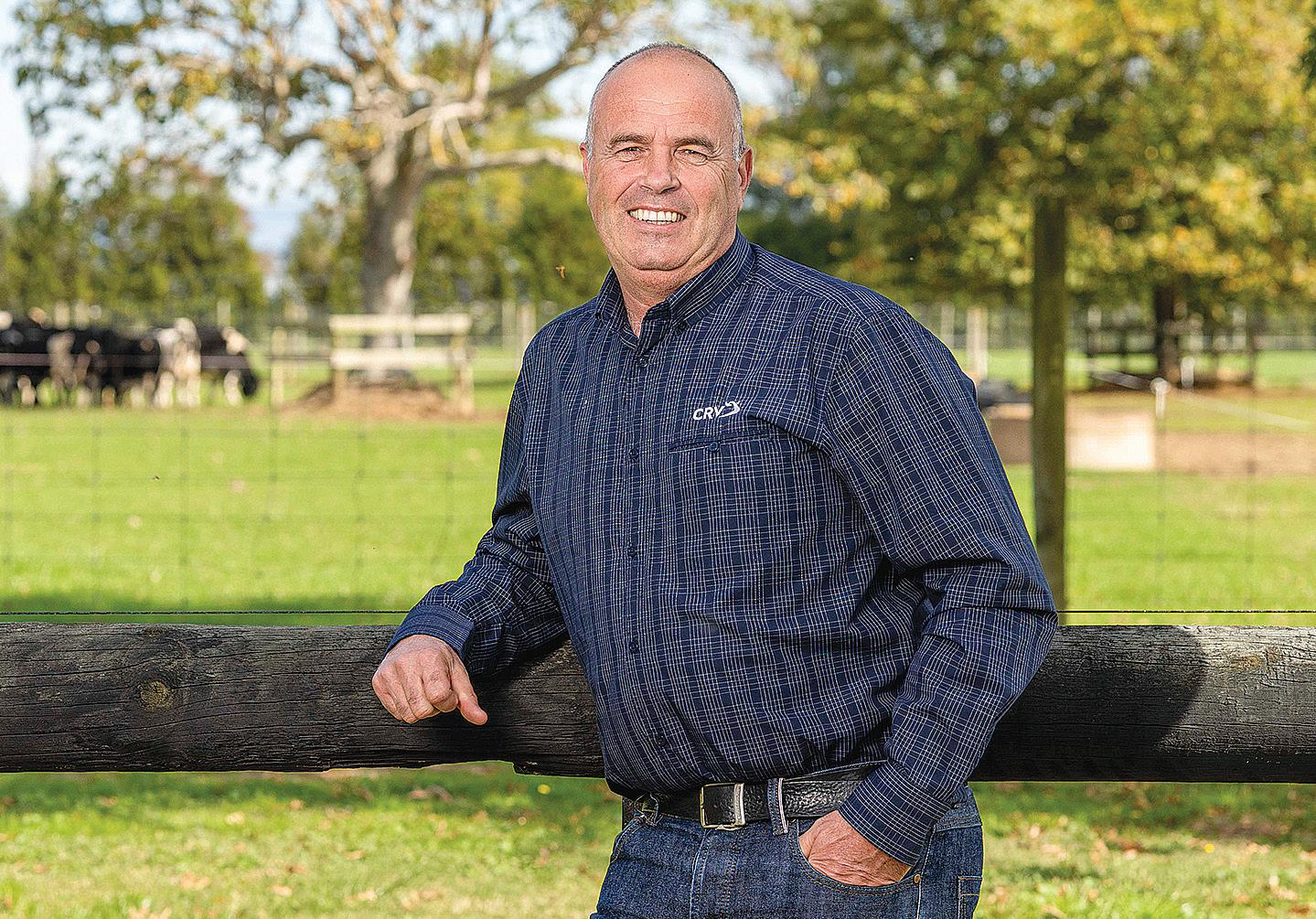
increasingly focused on sustainability, and that’s shaping demand right through the supply chain.
“Our job as a sector is to work
together to ensure dairy farmers have the right range of beef genetics – along with the advice and data – to fit their mating plans and make every calf
count. The momentum behind dairy beef is clear, and farmers are seeing real value in being able to choose sires that align with their herd goals.”
WEDNESDAY 18th & THURSDAY 19th FEBRUARY 2026
























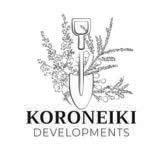
























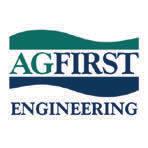
































































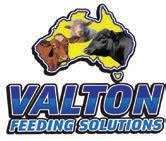









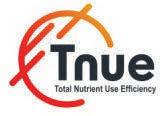





THE ASHBURTON-
BASED Carrfields Group continues to show commitment to future growth and in the agricultural sector with its latest investment, the recently acquired ‘Spring Farm’ adjacent to State Highway 1, Winslow, just south of Ashburton.
The 20-hectare property, previously owned by NZ Tractors, will be transformed into a state-of-theart research and development facility, serving as the base for breeding and seed technology efforts, ultimately becoming a hub for innovation and collaboration.
The site will become the new home of Winseed, housing its research activities,
featuring a breeding centre with state-ofthe-art glasshouses, nurseries, grow houses, and trial plots to drive its R&D programme and high-grade seed production.
The facility will complement key work in other areas of the Carrfields group, including grain and seed screening trials for pastoral, arable, and vegetable seeds, producing specialist stock seed, precision machinery trials, plant nutrition and protection trials.
Key appointments have already been made to support the Centre, with the project team currently working on Phase 1, which includes building infrastructure and planning rotational planting over the next 12 months.
Carrfields Group
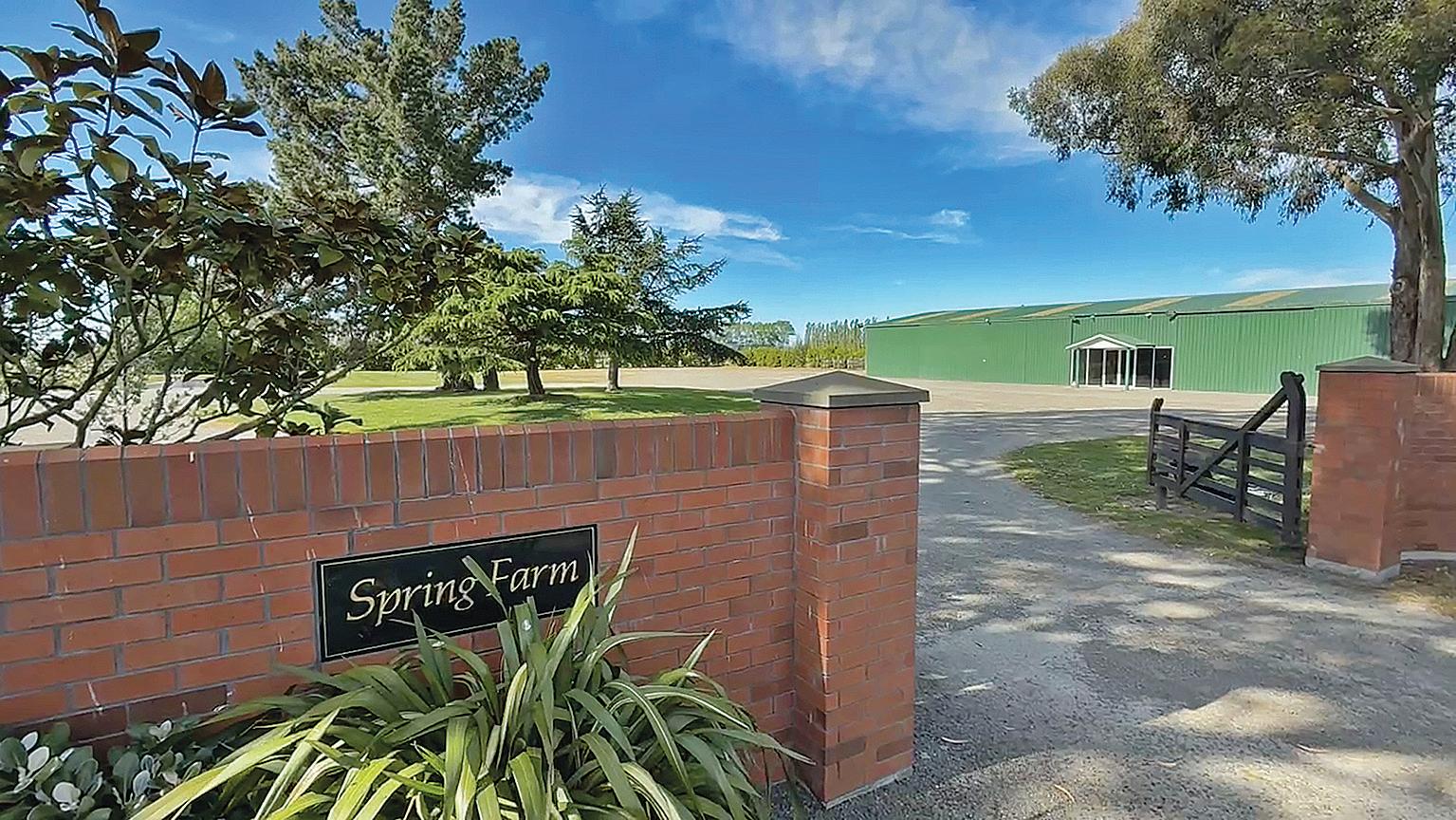
managing director Craig Carr says the investment demonstrates the company’s dedication to science, innovation and excellence in agriculture.
“Findings from this dedicated research facility will help us to continue to offer our customers modern and responsible farming
IN 2024, GERMAN manufacturer
Krone introduced the F400 Fold, a 4m wide disc front mower, featuring end modules that hinge rearwards to reduce the transport width to less than 3m.
They have taken this novel design to develop a new butterfly rear mower unit, the EasyCut B1250 Fold, which offers a working width of up to 12.5m.
As with the Fold front-mounted unit, the outer two sections on at the exterior of the 4.47m wide, 10-disc bed configuration pivot to reduce the overall height to under 4m.
In addition, as part of the overall

solutions, ensuring they get the best out of their crops.”
Carrfields is a 100% New Zealand familyowned and operated
company that spans farming, property, and agribusiness companies.
With a 49-year history, it exports to over 40 countries and has approximately 300 employees and contractors across NZ and India.

folding process, the rear mounted gearbox moves backwards hydraulically, creating more ground clearance for the 3.8t mower to be lowered on the tractor’s linkage.
The B1250 has been designed to work on increasingly popular 12 metre controlled traffic farming systems.
The B1250 Fold, when partnered with a F400 front mower, offers 45cm of overlap between the front and rear mowers when the 60cm of side-shift on the left and right units is fully extended to achieve 12.5m. The B1250 Fold can also be used with a 3.6m front mower, offering a reduced 20cm overlap.



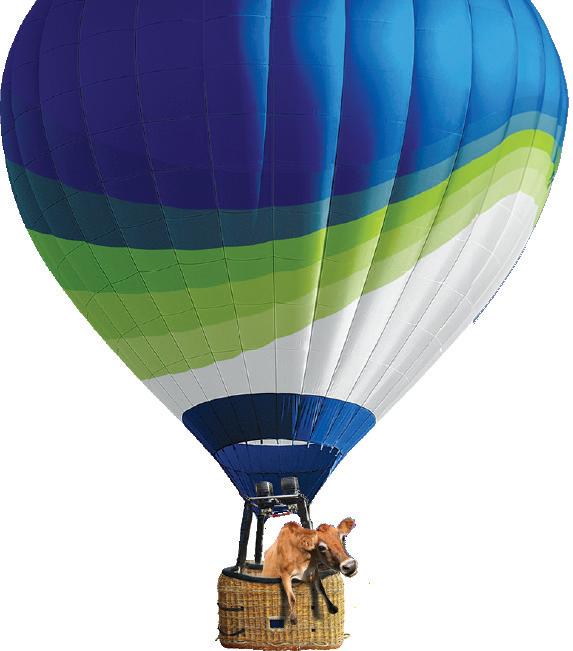
MARK
DANIEL markd@ruralnews.co.nz
FIRST UNVEILED in 2023, New Holland has announced the addition of the T7.270 Methane Power CNG (Compressed Natural Gas) tractor to the recently expanded T7 Range.
Initially, the tractor will be able to be ordered in Europe from the end of 2025, with first deliveries expected in spring 2026.
With continued increases in the cost of conventional diesel fuel, sources suggest that the concept is gaining considerable interest from larger arable farms running bio-digester plants, and from dairy operators who have a plentiful supply of livestock effluent and manure.
In the case of arable farms, it would appear a
good solution for farms running fleets of haulage tractors.
When fitted with the range extender tank, the tractor can operate for up to 11 hours in transport applications, before refuelling.
Looking at the tractor’s evolution in partnership with Bennamann, the concept enables the capture, processing and refinement of fugitive methane for use as fuel, with the closedloop system reducing emissions, cutting fertiliser use and offering the potential to achieve a negative carbon footprint.
Utilising the proven NEF 6.7-litre six-cylinder
engine that has been upgraded with a highperformance turbo, development also sees a new engine dataset, specific fuel system and after-treatment layout.
Offering a maximum 270hp under all conditions, complemented with a peak torque of 1160 Nm, the T7.270 Methane Power is said to meet customer performance level expectations in the sector, with the added benefit of a 750hr service interval.
Thanks to the new T7’s larger chassis, the design team has been able to optimise on-board gas storage with standard capacity of 657 litres and an optional 480-litre range extender, offering a total of 1106 litres (204.1kg).
When fitted with the range extender tank, the tractor can operate for up to 11 hours in transport

applications, before refuelling via an industry standard NGV2 refuelling valve that allows rapid refuelling times, equivalent to diesel.
Looking at the tractor in general, the unit is specified with New Holland’s Auto Command, continuously variable transmission offering highly efficient
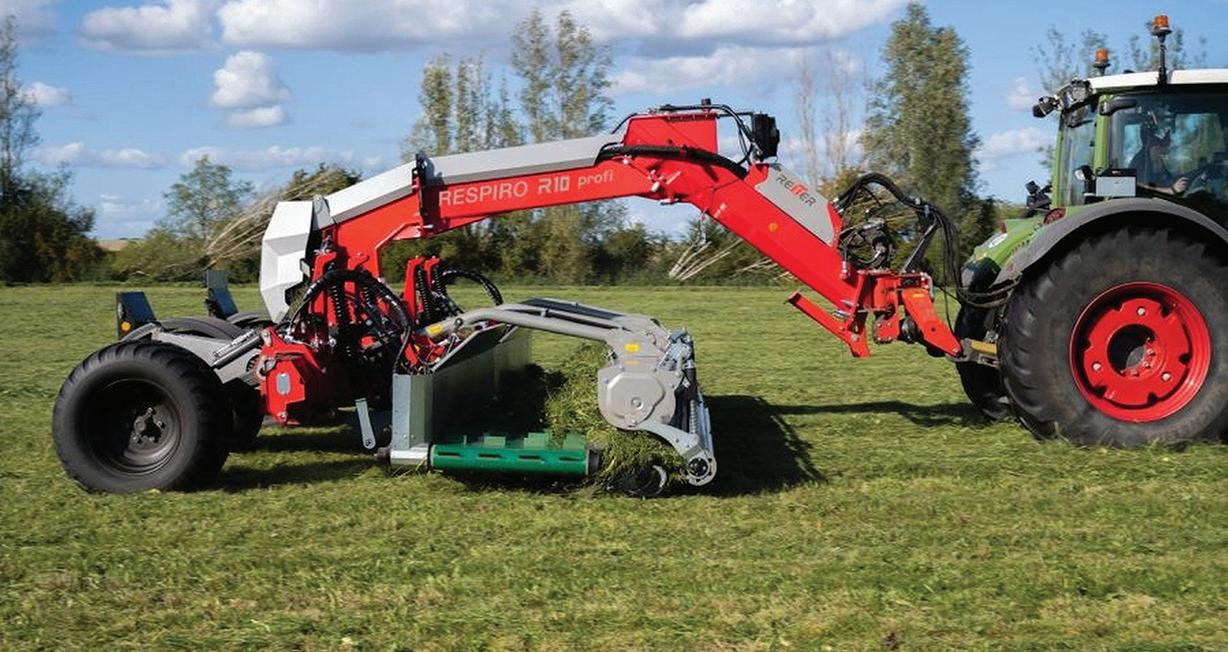
BUILDING ON experience gained during 10 years of making mergers/ windrowers, Austrian company Reiter has announced the secondgeneration pick-up on the new R10 model.
Offering a working width of up to 10m, the pick-up on the new fully
ISObus-compatible merger is said to produce a better flow of material to the centre of the belt, with belt speed easily adjustable from the tractor cabin. Tipping the scales at around 6.5 tonnes, power requirement is from 150hp upwards, with transport height, width and length at 3.95m, 2.96m and 6.4m, respectively. The R10 will be complemented by a new generation Respiro 3.0m and 3.5m.
Delivering a turnover of €4.2 million in 2024, the company’s biggest markets are France and Germany, where three of the five pre-production R10 machines were tested earlier this year. To date, Reiter claims to have sold more than 800 mergers to date. Available in more than 30 countries worldwide, Reiter is distributed in NZ by the Morrinsvilleheadquartered Piako Group. Visit www.piako.co.nz
fuel consumption, and a smooth ride experience particularly when working with high-capacity trailers.
Equipped with the Horizon Ultra cab, said to be the industry’s quietest at 66 decibels, the operator has more space and advanced suspension, complemented by
the PLM Intelligence platform.
Tractor management is via the latest IntelliView 12 interface, integrated into the SideWinder armrest, while full TIM compatibility enables seamless implement integration front and rear. The tractor also benefits from New Holland
Intelligence solutions, which integrates digital technologies for twoway transfer of machine and field data between the tractor and the FieldOps portal. Data is automatically recorded, allowing owners and managers to monitor machines, while dealers – with permission – can provide remote support.





